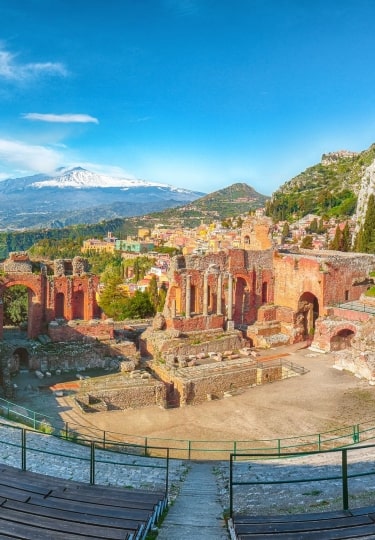The abundant charms and extraordinary history of this Italian island make whittling down a list of the best places to visit in Sicily a seriously tricky business.
The island’s strategic importance at the heart of the Mediterranean has brought about a rich, multi-layered history and a distinctive Sicilian identity. Like the warm blue waves that lap at its picturesque coast, a succession of invaders arrived to leave their mark: the Greeks were followed by the Romans who were succeeded by the Normans, the Byzantines, and the Spanish before Sicily’s eventual fusion with modern-day Italy.
The visual signposts of this past—with periods as tumultuous as simmering Mount Etna—can be found all over Sicily, overlapping, layered up, and harmoniously fused. As such, despite being just over twice the size of Hawaii, Sicily crams it in—and invites you to do the same.
Baroque cities, stretches of serene golden sand, knock-out cuisine—it’s Italy, but it’s also distinctly Sicily. Here are some of the best places to visit in Sicily on your next vacation.
Castelmola
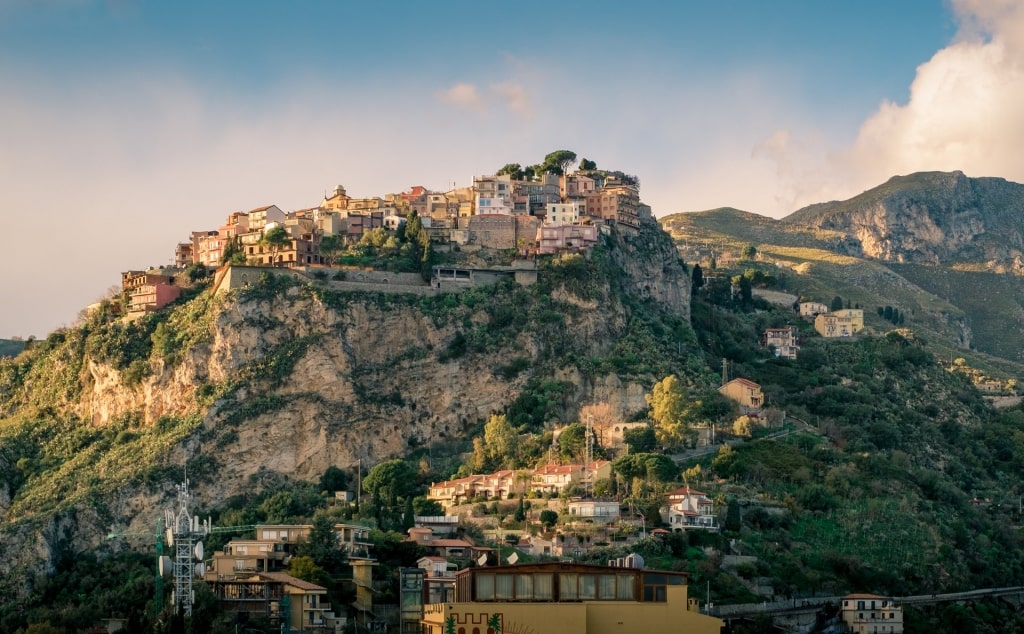
Castelmola
Set a little over a mile back from the glamorous coastal resort of Taormina is Castelmola, loftily positioned 1,800 feet above sea level on the higher elevations of Mount Tauro. Established on a natural shelf with commanding views across the strait of Messina to Calabria, a trip to this reinforced hamlet is well worth a few wiggly mountain roads.
Dating back to the 9th century, Castelmola used to be a near-impregnable fortress. Today, it’s a peaceful jumble of peach and orange buildings with stairways of white pumice and colorful cafe terraces ringed with panoramas of sea, coast, and cloud-fringed Mount Etna.
Whether you choose to relax at a table sipping local specialty Vino alla Mandorla (a sweet almond wine) or wander the nest of narrow medieval streets, you’ll definitely look back at Castelmola as one of go-to places when visiting Sicily.
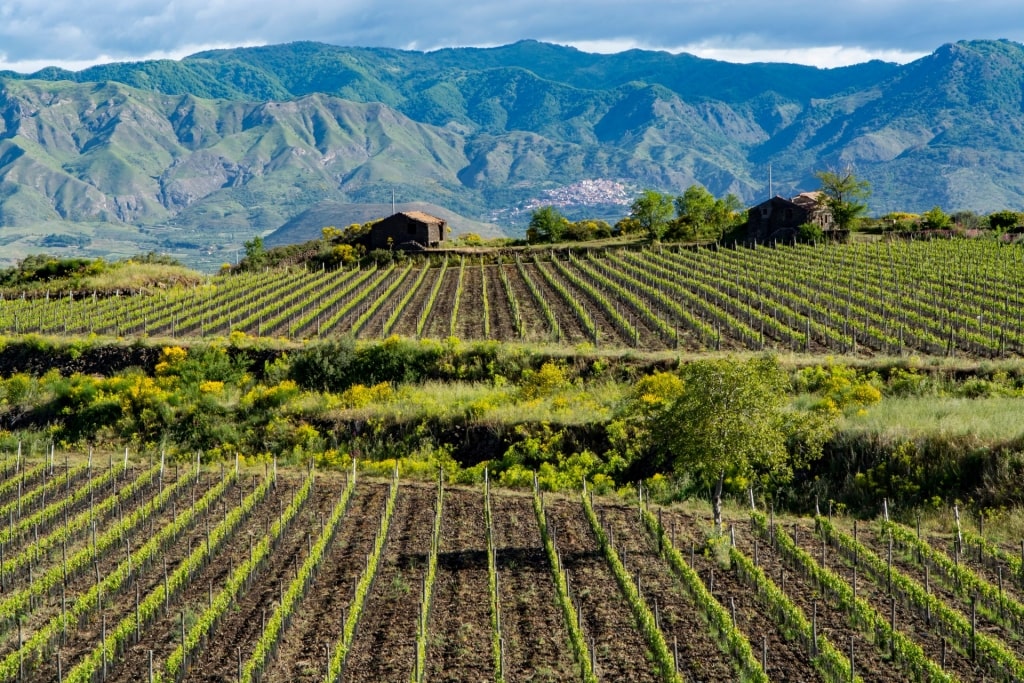
Castelmola
Drawn to the slumbering volcano’s irresistible charisma? Castelmola acts as a good departure point from which to embark on a wine-tasting trip along Etna’s generous slopes. The humid climate and fertile soil of the volcano make for superb grape growing, while the knowledgeable locals have been vinifying their distinctive varieties since 800 B.C.
Popular grape varieties grown on the volcano include the light-bodied, typically cherry-forward Nerello Mascalese and the more robust, spicy Nero d’Avolo.
Tindari
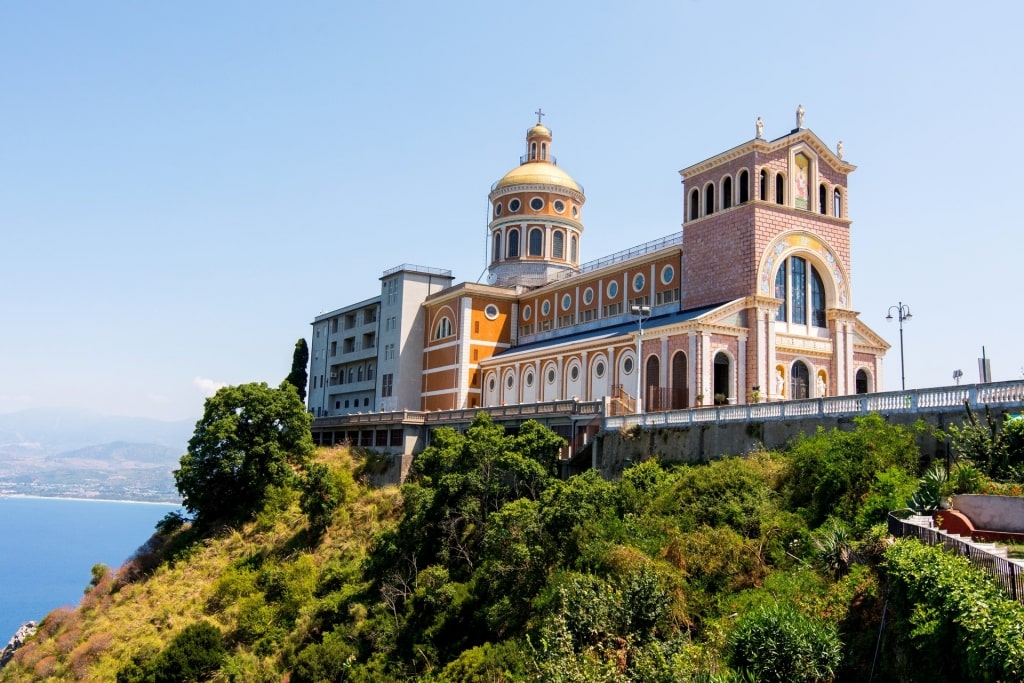
Sanctuary of the Black Madonna, Tindari
On the island’s northeastern coast, Tindari’s cliff-edge location offers extraordinary views of the volcanic Aeolian archipelago skipping across the turquoise Tyrrhenian Sea towards the mainland. While low tide beneath the town exposes a tranquil lagoon with a spit of golden sand that projects enticingly into the warm water, Tindari is equally well known for its ostentatious pink and gold cathedral.
This architectural confection, known as “Shrine of Our Lady of Tindari,” was completed in 1979 to house Tindari’s famous Black Madonna.
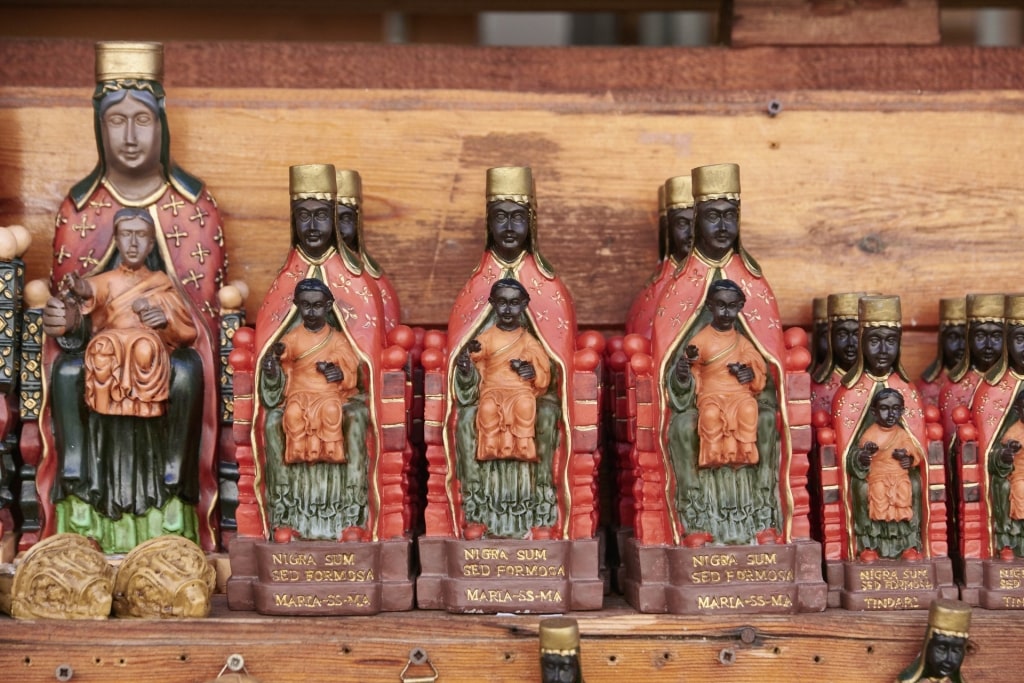
Black Madonna, Tindari
This rare icon, carved from cedar wood, depicts the Virgin Mary and the Christ as dark-skinned. Its unusual appearance and the serendipitous manner in which it arrived on Tindari’s beach have imbued the statue with a heightened spiritual significance.
Pilgrims come from all over the island—and even the occasional Pope from Rome—to see the Black Madonna. If you’re fortunate with your timings, you can confirm if the spit of sand below the sanctuary really does, according to Tindari lore, resemble the profile of the Black Madonna.
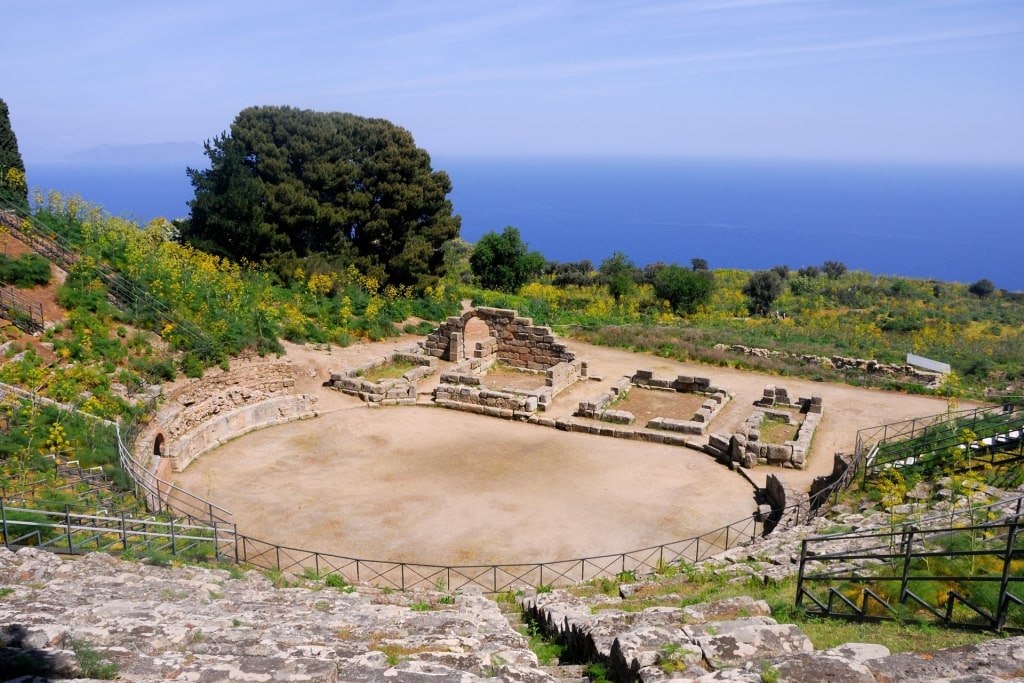
Greek Theatre, Tindari
Or make your way to the Greek Theatre, the town’s other major cultural site. Exploiting its seaside location to maximum effect, this 4th-century archaeological treasure is in excellent condition and is still used for performances to this day (happily minus the gladiatorial hacking).
Savoca
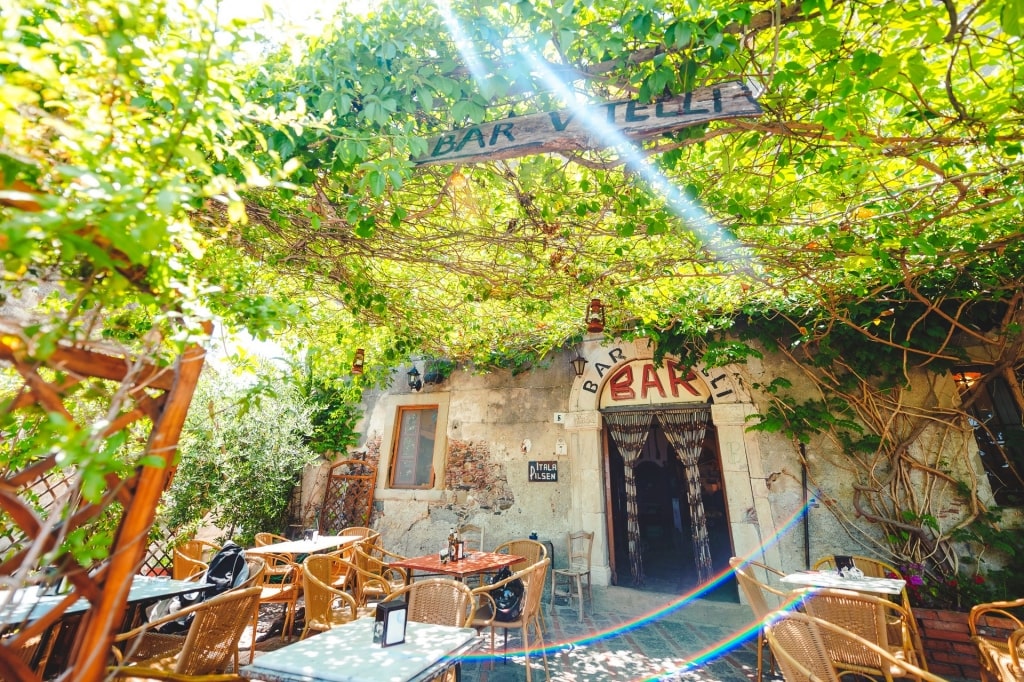
Bar Vitelli, Savoca
The village of Savoca, spread over two small peaks between Taormina and Messina on the east coast, is a uniquely special place.
When travelers arrive in Savoca, they’re typically drawn there not for its spellbinding views across the Strait of Messina or for its outsized cultural heritage, nor for the local lemon granita topped with crisp zzuccarata biscuit. Instead, the majority of visitors find their way to Savoca because of its links to The Godfather.
It’s been nearly a half-century since The Godfather, Dario Fo’s classic novel about a Sicilian mafia family, was translated to the silver screen. Despite this, the power of the epic Godfather trilogy has lost none of its potency. You’ll discover this on a visit to Savoca, especially if you’re a part of the engrossing Godfather Tour.
Whether you’re a devotee of Fo’s novels or a neophyte, the Godfather Tour touches upon the island’s underworld history at a safe remove while also touring some stunning, out-of-the-way places in Sicily. Sharp-eyed fans will recognize backdrops used in the movies, while a visit to the Savoca-based Godfather museum of Bar Vitelli will offer deeper insight into the production process.
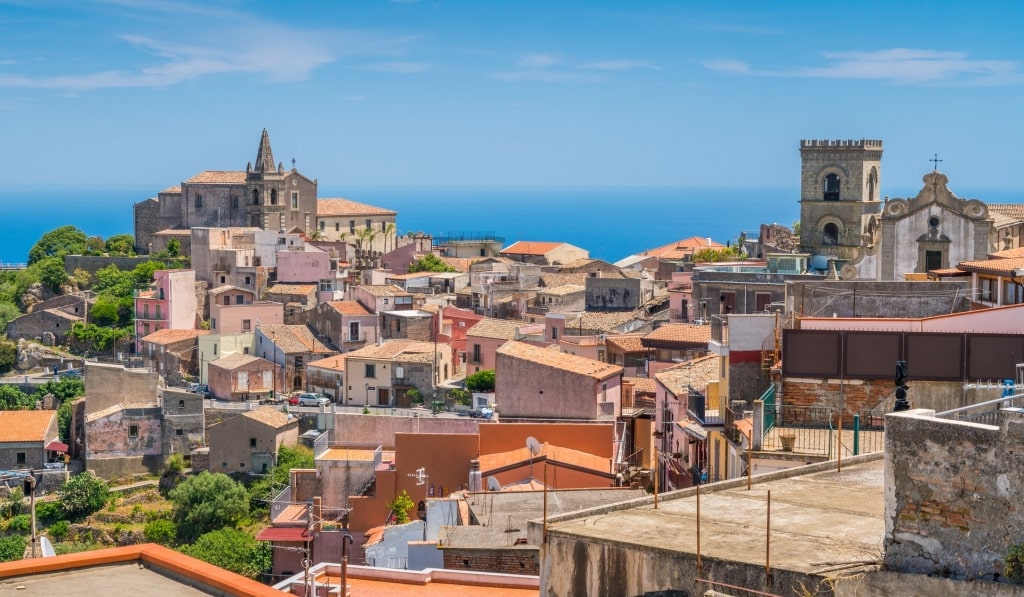
Forza D’Agro
After Savoca, the tour progresses south to Forza D’Agro, a coastal village threaded with ancient alleyways that often conclude in incredible sea views. Also here is the striking castle of Capo Sant’Alessio, where Al Pacino and Sophia Coppola shot scenes for the third installment.
If you have time, a deliciously offbeat addition to the town is a museum where Sicilian landmarks are crafted out of chocolate. While on the subject of food, don’t worry—sustenance on the Godfather Tour won’t only come in the form of Marlon Brando impersonations and picture-perfect Sicilian scenes. Tastings of local specialties will be arranged for you along the way. Capeesh?
Taormina
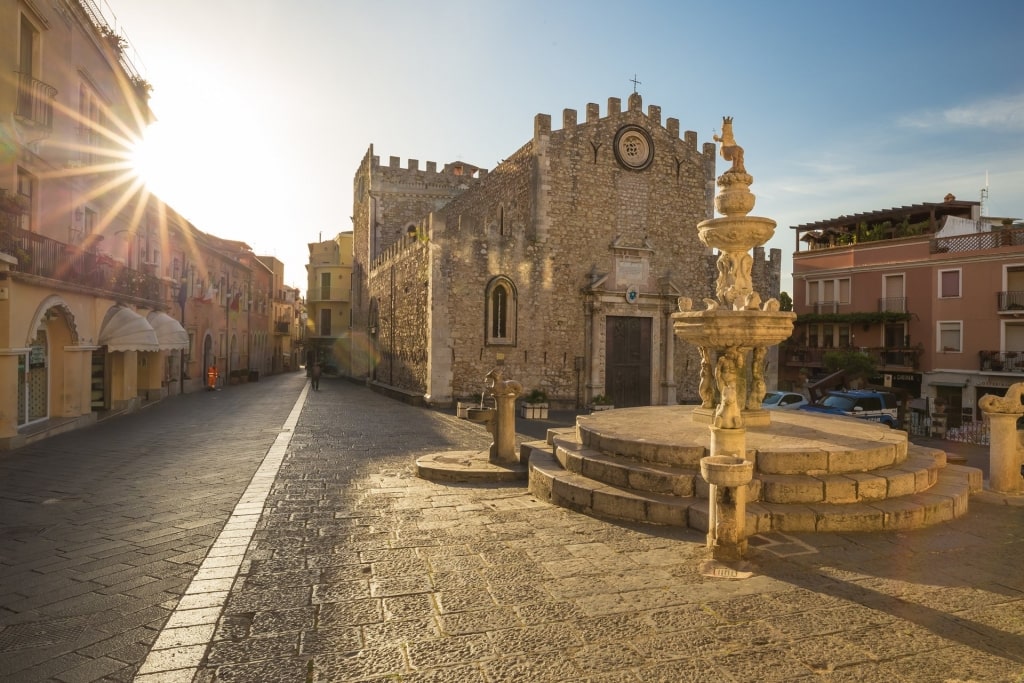
Corso Umberto, Taormina
Established as one of the best places to visit in Sicily since the 18th century, Taormina offers panoramic views over the Bay of Naxos and the Ionian Sea. This charming resort town is set into the Sicilian hills 200 feet above sea level, its timeworn streets and marble stairways lined with orange trees and family-run boutiques.
Taormina was an essential stop on the 19th-century’s Grand Tour, and for many literary types it became a home away from home. D. H. Lawrence resided amid Taormina’s cannoli and stone pines for several years, completing much of Lady Chatterley’s Lover along the way.
Finishing up his day’s writing as the sun sets, Lawrence might have joined the populace in a passeggiata along the main strip of Corso Umberto, pausing to pick up a refreshing lemon granita before continuing on to the main piazza.
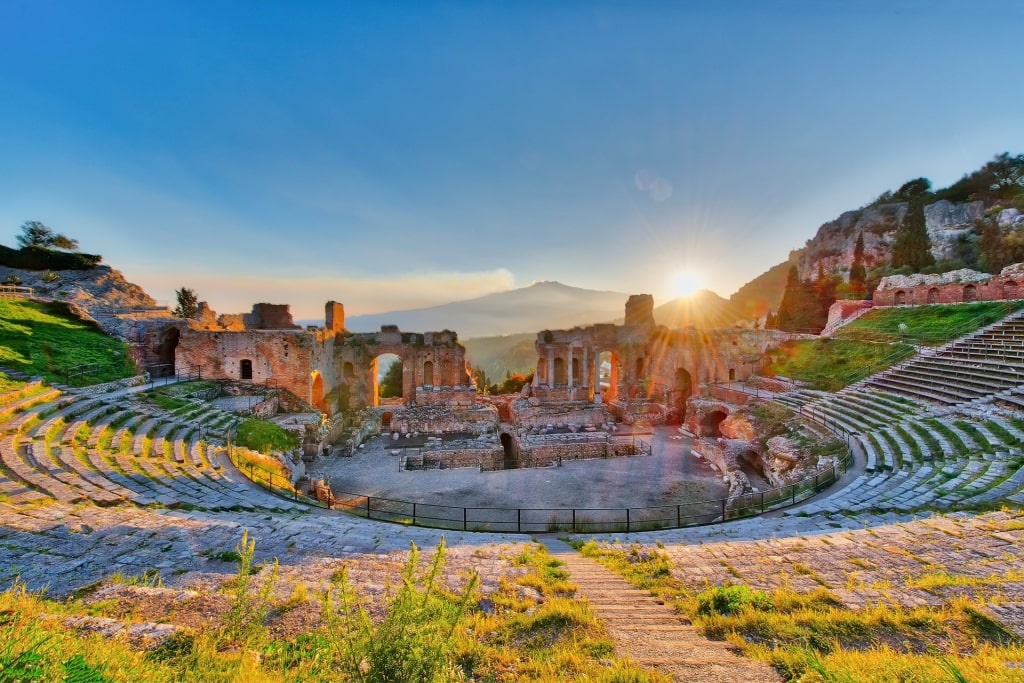
Greek Theatre of Taormina
While Taormina the town is a destination in itself, it comes with the added bonus of the Greek Theatre. A site of both Greek and Roman significance, the theater’s position on the peak above the town’s terracotta roofs is striking. Sicily’s second-largest theater is still used for lofty concerts from spring to early autumn.
The Blue Grotto
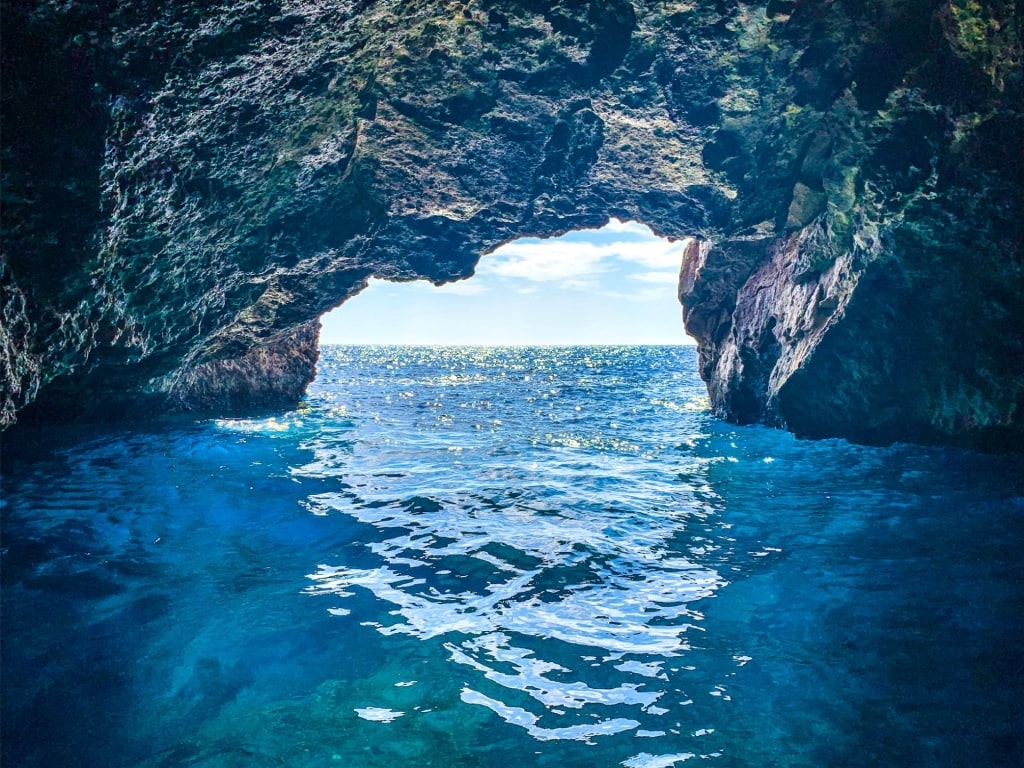
The Blue Grotto
If you’re visiting Taormina, you’ll find, while sipping white wine amid the bougainvillea-scented breezes, that you’ll spend much of your time staring out over the far-reaching coastal views. You’ll inevitably feel a pull to the sapphire expanse of Taormina Bay, home to some of the best beaches in Sicily. If you choose to charter a boat, be sure to make time for the mesmerizing Blue Grotto (or “Grotta Azzurra of Taormina”).
The coastline on this stretch of Sicily is an undulation of rough, characterful limestone cliffs arcing over echoing sea caves. One of these is the Grotto—a sizable specimen which, due to its form and orientation, seems to shine with an inner luminosity.
Travelers to Capri may have already witnessed a similar phenomenon and may decide to forgo a visit to the Sicilian version. Be aware, however, that this grotto comes with a shorter boat ride over calmer seas and distinctly fewer tourist rowboats to play bumper cars with while inside. As with Capri, it’s also possible to dive into the grotto.
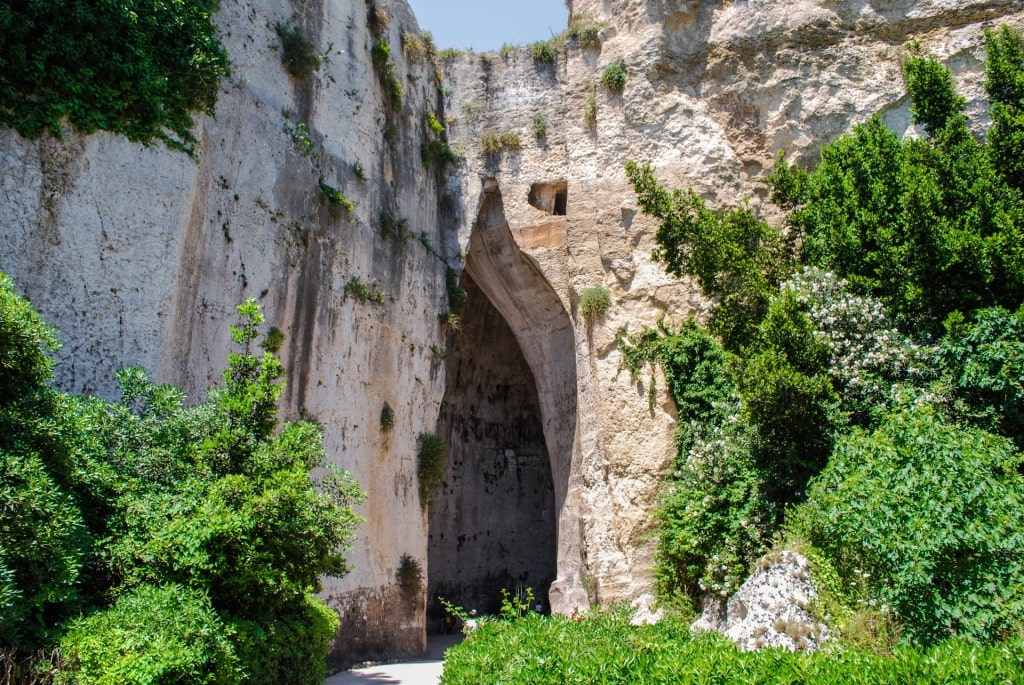
Ear of Dionysus
If time allows, another of Sicily’s significant limestone phenomena worth visiting is the Ear of Dionysus. No sea legs required here: located in Syracuse, the Ear is actually a tall, curving limestone quarry with extraordinary acoustics. Its name stems from the legend that the Greek tyrant Dionysus would use the cave to eavesdrop on whispering conspirators.
Syracuse
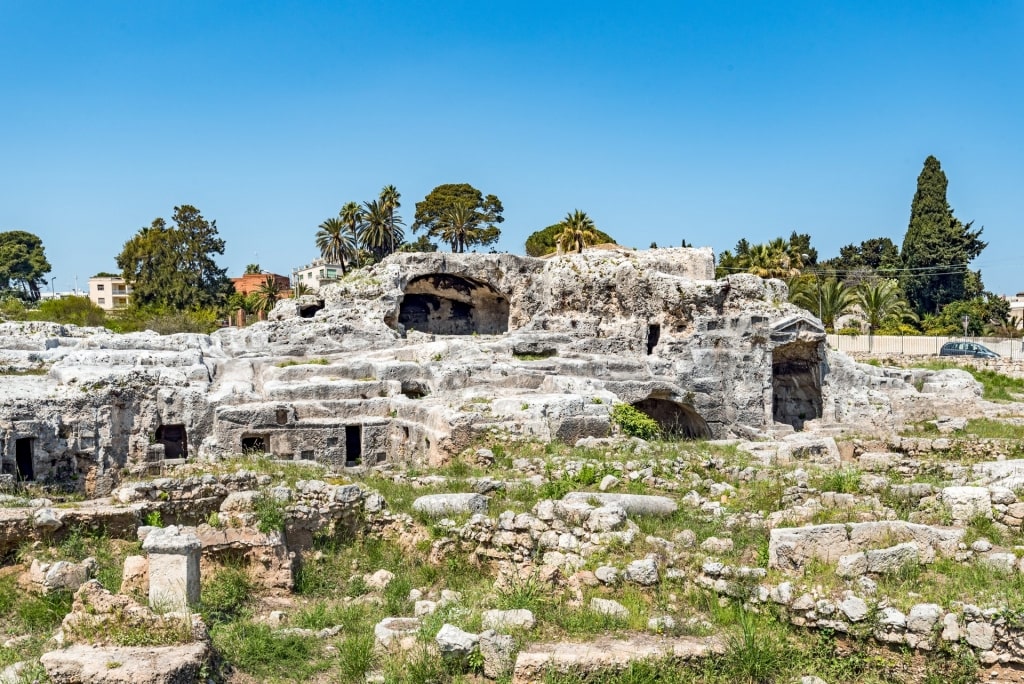
Tomb of Archimedes
Sublime Syracuse is perhaps the best place to visit in Sicily to come to grips with the island’s palimpsest past.
At one point the largest city in antiquity, Syracuse combines Grecian and Roman ruins with Sicilian baroque architecture and much more amid its UNESCO-listed streets. Touring this open-air museum, you’ll encounter its spectacular Greek Theatre (still used for concerts today) as well as the Tomb of Archimedes, the remains of Syracuse’s most famous son.
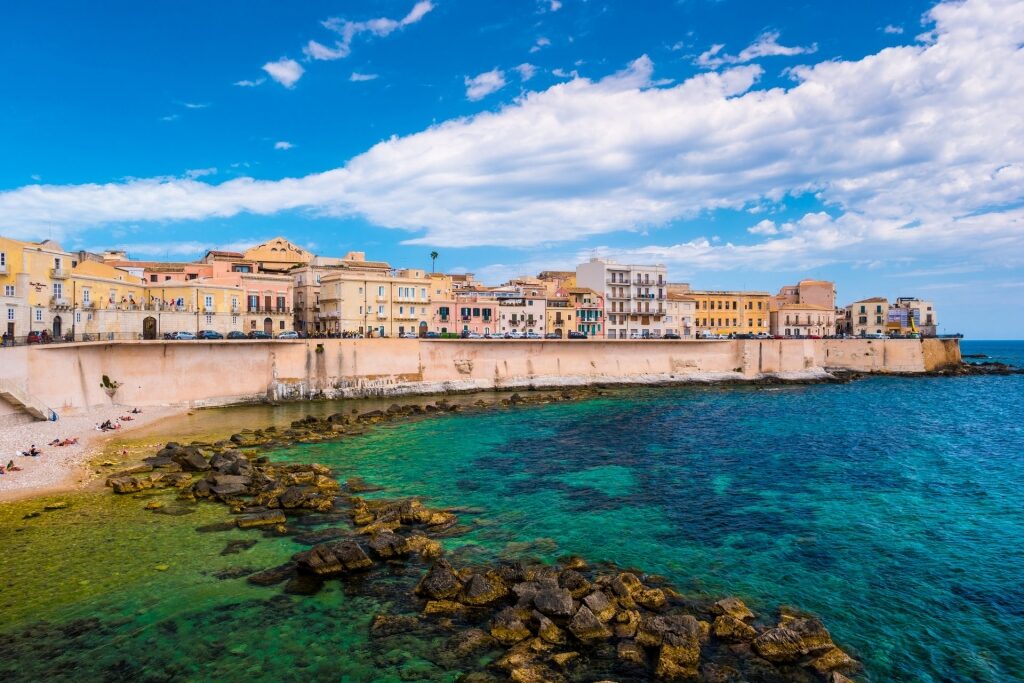
Ortigia
The jewel of Syracuse is the island of Ortigia, the city’s historic heart. A labyrinth of bars, restaurants, and street markets, if you can resist dallying too much along the way, you’ll eventually emerge into the Piazza del Duomo. Here you’ll find the baroque duomo surrounded by sophisticated palazzi as well as a Caravaggio haunting the Santa Lucia alla Badia church.
Or there’s the gelato and brioche from Gelati Bianca on the corner. Culture is not only to be considered and appreciated, but also eaten—preferably in a cone.
Catania
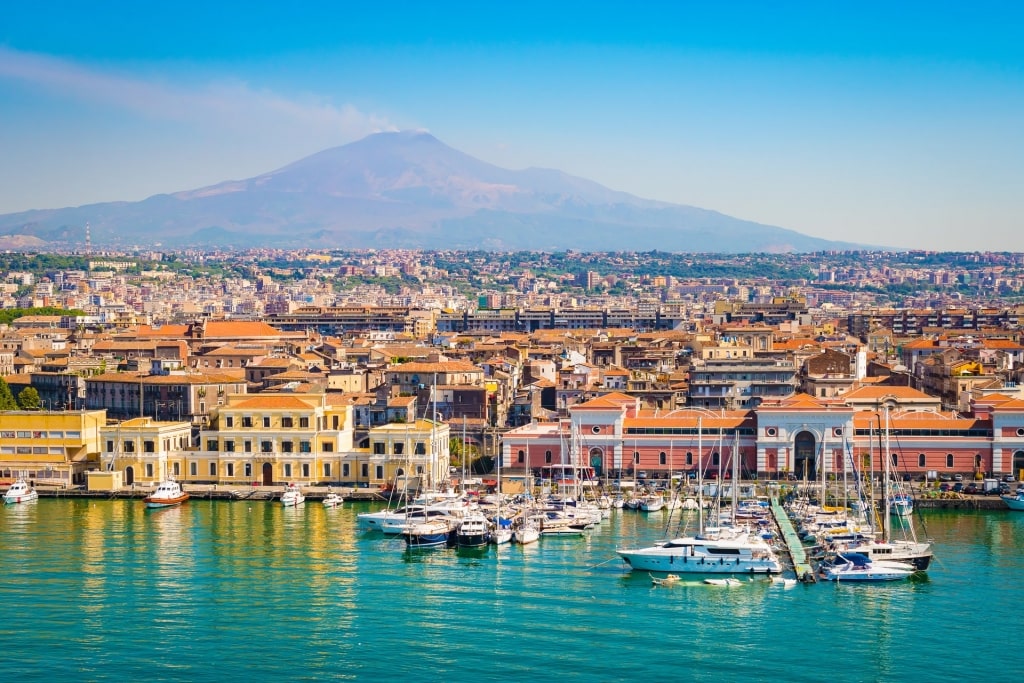
Catania
The second city of Catania is often referred to as the Milan of Sicily. It’s less to do with any alliance with high fashion, and more about its economic importance and handsome baroque appearance—the result of an extensive rebuild after the city was flattened by an earthquake in 1693.
Thankfully the city’s motto is, “Melior de cinere surgo,” or, “From the ruins, I emerge stronger.” And it has, with modern-day Catania now one of the best places to visit in Sicily—a vibrant metropolis of granita stalls, pasta shops, and artisan shops. Its compact center is ideal to explore on foot, with aperitif-friendly piazze presided over by grand opera houses and the clean white tables of the main seafood market laid with glistening grey eels fresh from the day’s catch.
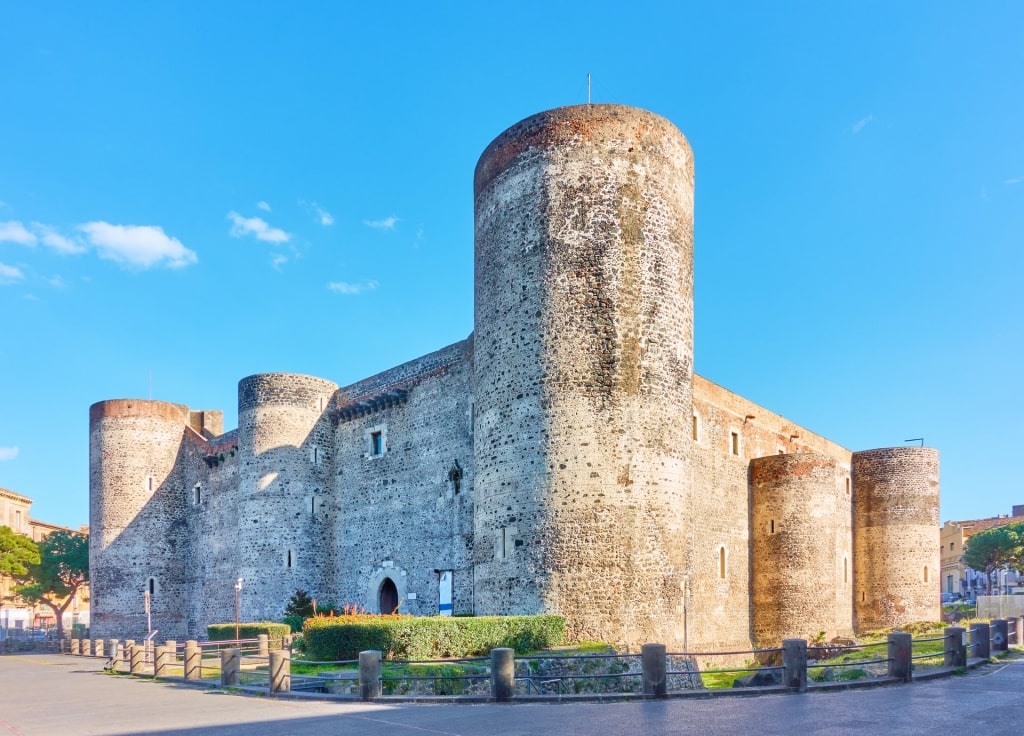
Ursino Castle
Besides wandering its intriguing streets, the city is also home to numerous museums. One of the finest is set within the stout surrounds of 13th-century Castello Ursino. Its wide-ranging and impressive collection includes Roman artifacts, Renaissance art, as well as general historical information about the city’s catastrophes and rebirths.
While the cuisine in Catania makes much of its coastal bounty (as well as the flavorful local eggplant), keep an eye out for treats unique to the city such as crispella, sticky rolls of rice and orange zest that you dip in orange blossom honey before devouring. It’s messy, but a laid-back approach to life is only one of the many ways in which Catania differs from Milan.
Mount Etna
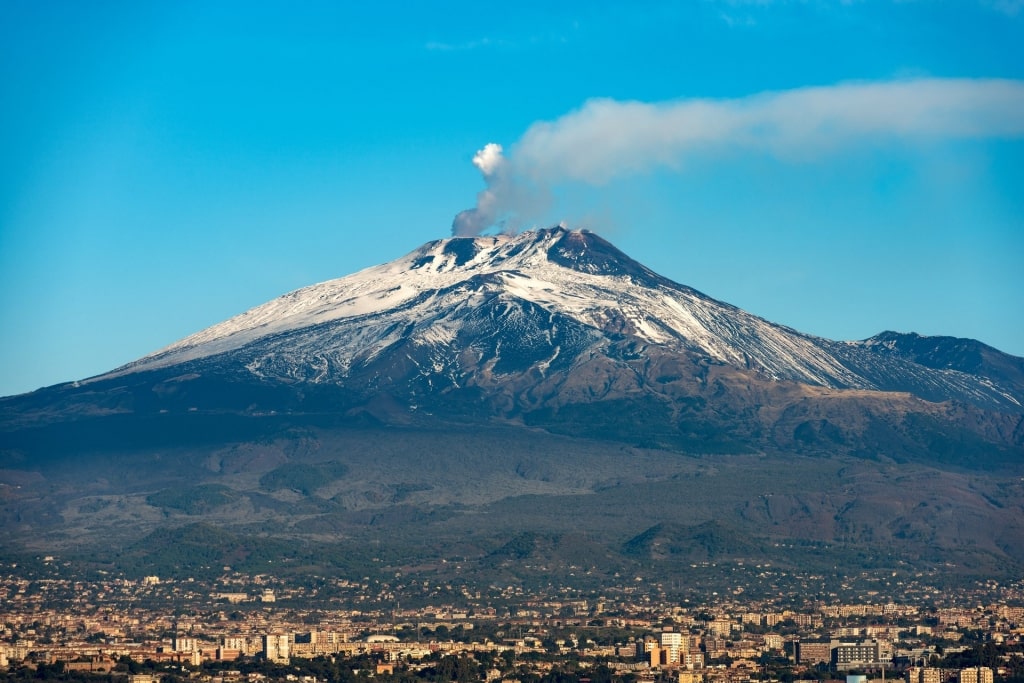
Mount Etna
Mount Etna, Sicily’s totemic live volcano, may rise up on the eastern side of the island, but it presides over the entire interior like a (mostly) benign god. There are extraordinary views of the peak from almost anywhere in Sicily, but perhaps the best outlook is from the terrace of Taormina’s Belmond Hotel Timeo (while sipping an Etna Spritz).
Etna erupts on a fairly regular basis, and despite this, the population lives (mostly) in harmony with this vast, gently sloping landmark. Come winter, when snow blankets the higher elevations, ski runs snake down the mountain in pale imitation of lava flows. During the rest of the year, it’s a destination for Sicilians looking to hike their beautiful hinterland and commune with nature.
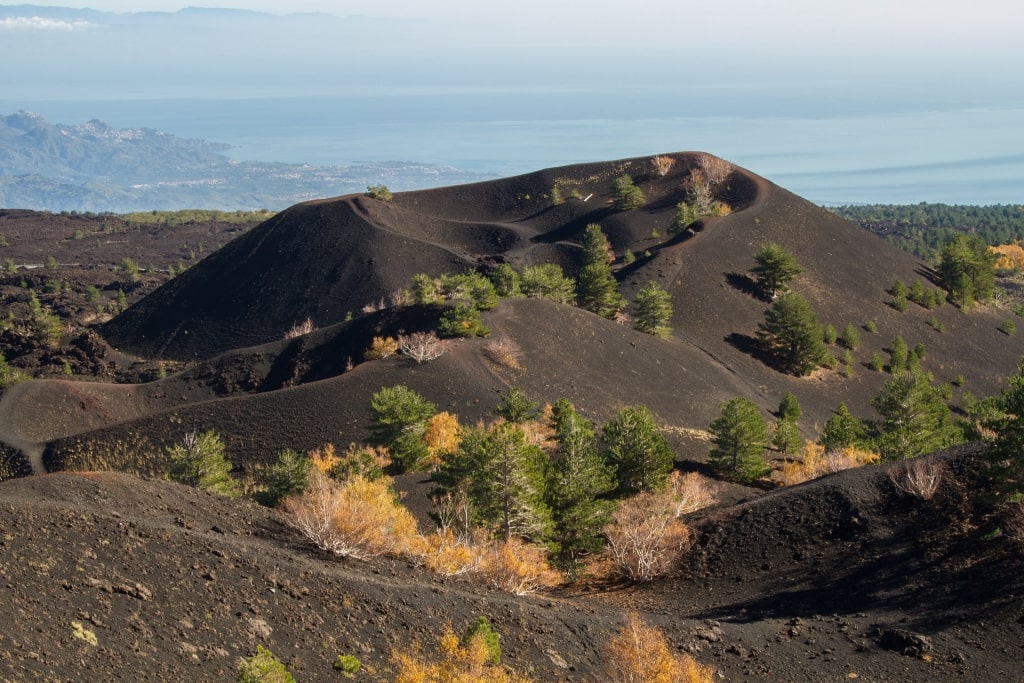
Sartorius craters
An exciting way of getting up close and personal with Etna is by organizing a guided tour. The tour will escort you to its extinct Sartorius craters—a lunar landscape of sooty dunes interspersed with forlorn-looking larches, maroon rocks, and glittering magnesium sand. Head down from its breezy summit and you’ll pass local families BBQing in the oak woods.
A good percentage of those families will be cracking open a bottle of wine, the grapes of which were probably grown on Etna’s generous slopes. Many vineyards here come with tasting rooms, and there’s often a farm component that allows you to marvel at the size and sweetness of the outsized peaches and oranges grown on the volcano.
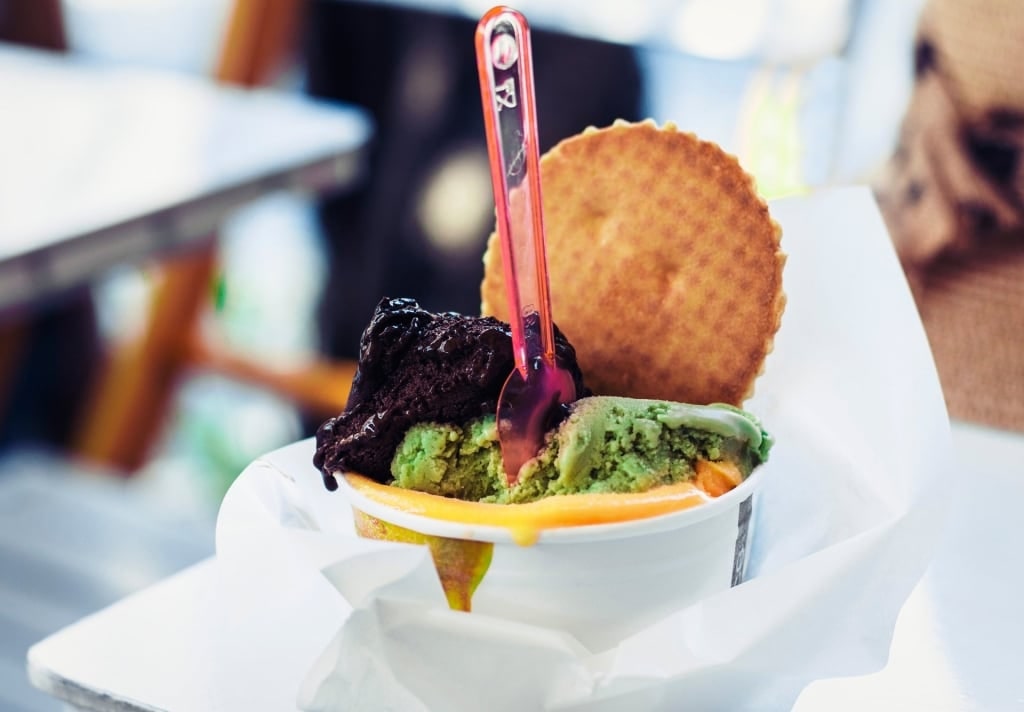
Sicily
Rather keep your distance from one of Europe’s most active volcanoes? Urban streets all over the island are paved with the stone spewed from the mountain. Seek out some Etna-flavored ice cream (strawberry and pistachio) on a basalt-paved side-street and commune with the volcano in your best way.
Palermo
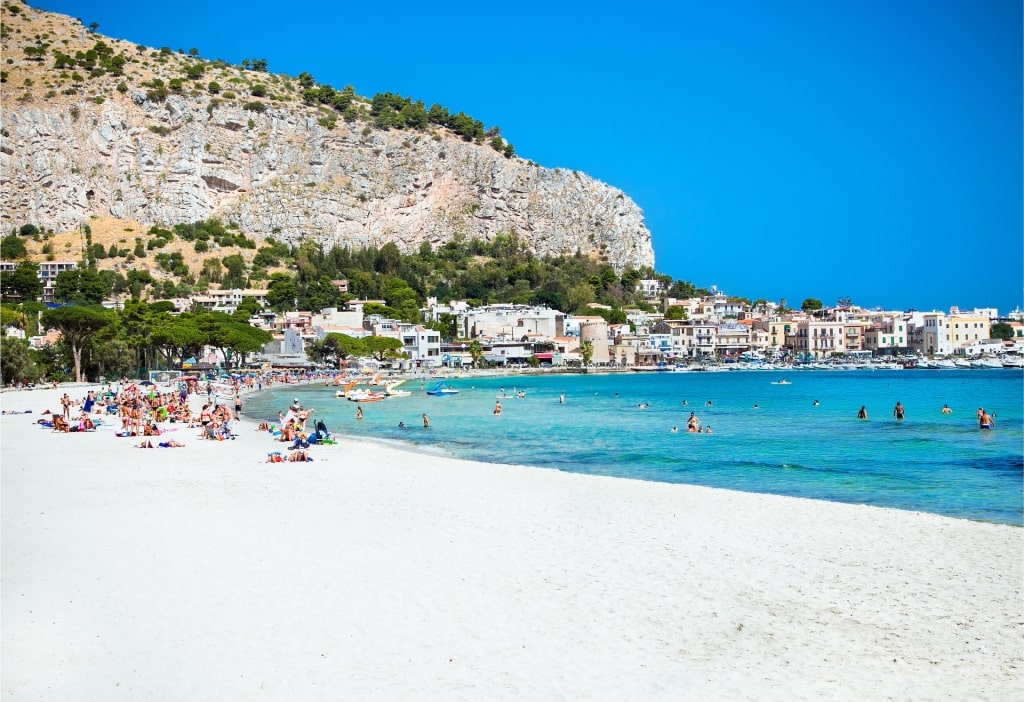
Mondello Beach, Palermo
Palermo, the island’s baroque capital, is a richly historic and vibrant metropolis. Set on the rugged northern coastline, it’s where to visit in Sicily to experience the overlapping influences that shaped this remarkable island, and with one of the island’s best beaches as a bonus.
One of the best things to do in Palermo is visit the iconic Quattro Canti crossroads, symbolic of a city that invites exploration. A main cog in the old Roman street plan, the straight roads that led off the Quattro Canti contrast with Palermo’s romantic tangle of alleys and lanes.
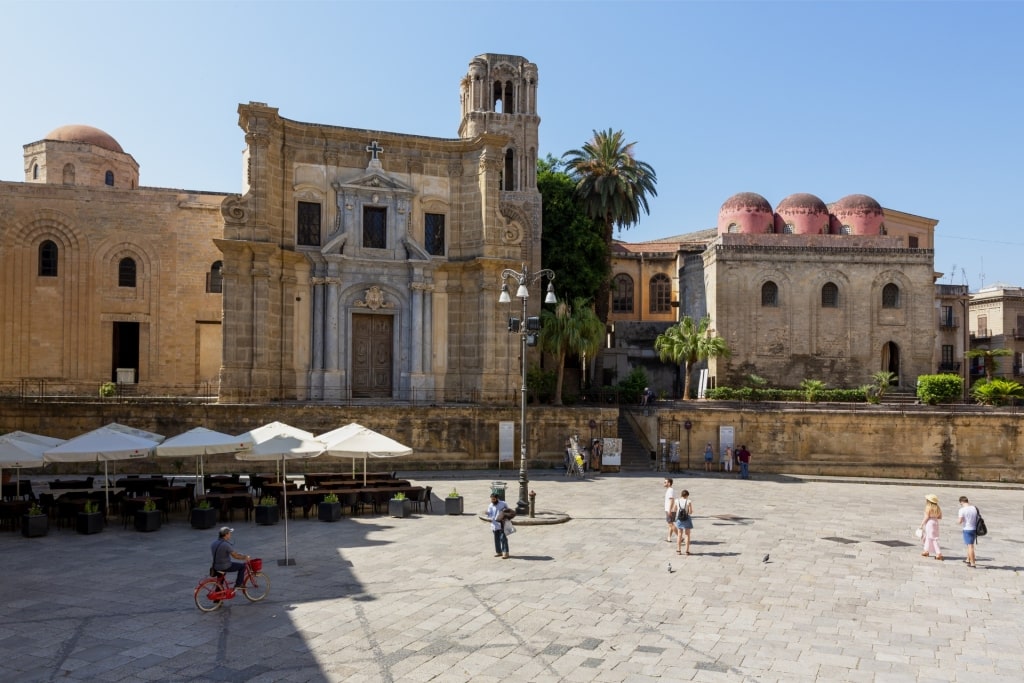
Piazza Bellini, Palermo
The density of exquisite churches here feels like it almost matches that of restaurants. Piazza Bellini’s La Martorana with its UNESCO-mosaics; Santa Caterina and its still operational 13th-century pasticceria; and the 12th-century San Cataldo, an intriguing amalgam of mosque and church, are the essential must-sees.
Striking contrasts are also readily available. You can walk from the pregnant stillness of these holy places to enter the raucous commerce of Palermo’s souk-like markets. Snack on warm chickpea fritters while browsing the stalls of atmospheric Ballaro market.
Monreale
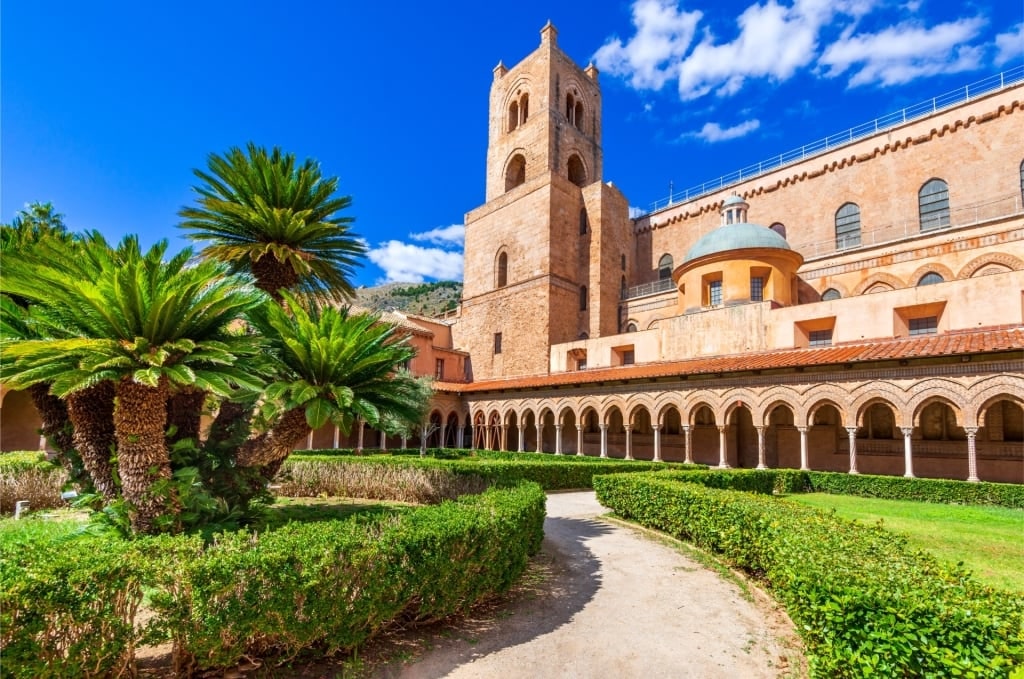
Monreale
A relatively unassuming hilltop town just south of Palermo, Monreale is nevertheless famous for its magnificent 12th century cathedral.
One of the world’s finest existing examples of Norman architecture, the cathedral is both elegant and hulking in equal measure. Within are enough glass mosaics to completely cover a football pitch, with some left over. Look out for the famous depiction of Eve being born from Adam’s rib, as well as the cloister—an Arab-Norman architectural masterpiece.
While it’s a short drive to Monreale—around half an hour from the city center—it’s possible to walk back via the Conca d’Oro valley to Palermo, which takes about two hours. The views over the coast are superb.
Cefalù
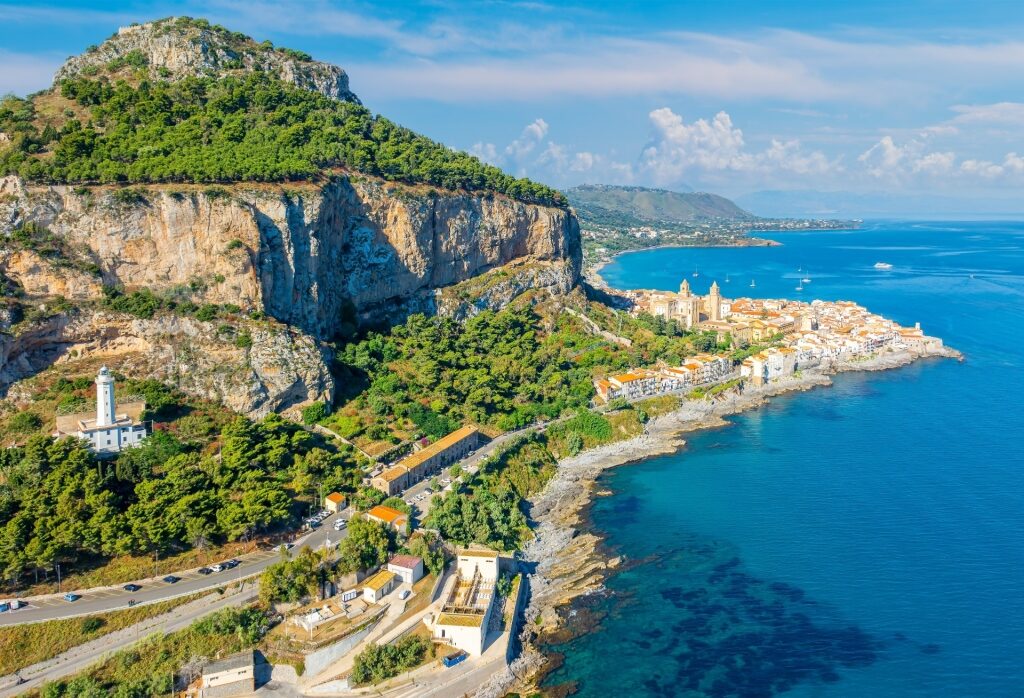
Cefalù
Cefalù, a resort town on the island’s north coast, is one of the best places to visit in Sicily. Reached on a scenic hour-long train ride from Palermo, this town offers a broad ribbon of soft sand with silky, scalloped shallows, a maze-like old town, and an outsized cathedral with UNESCO recognition.
Backed by the flat-topped La Rocca mountain, the image of Cefalù’s seafront homes, mere feet from the glassy sea, is one of the most iconic images of Sicily.
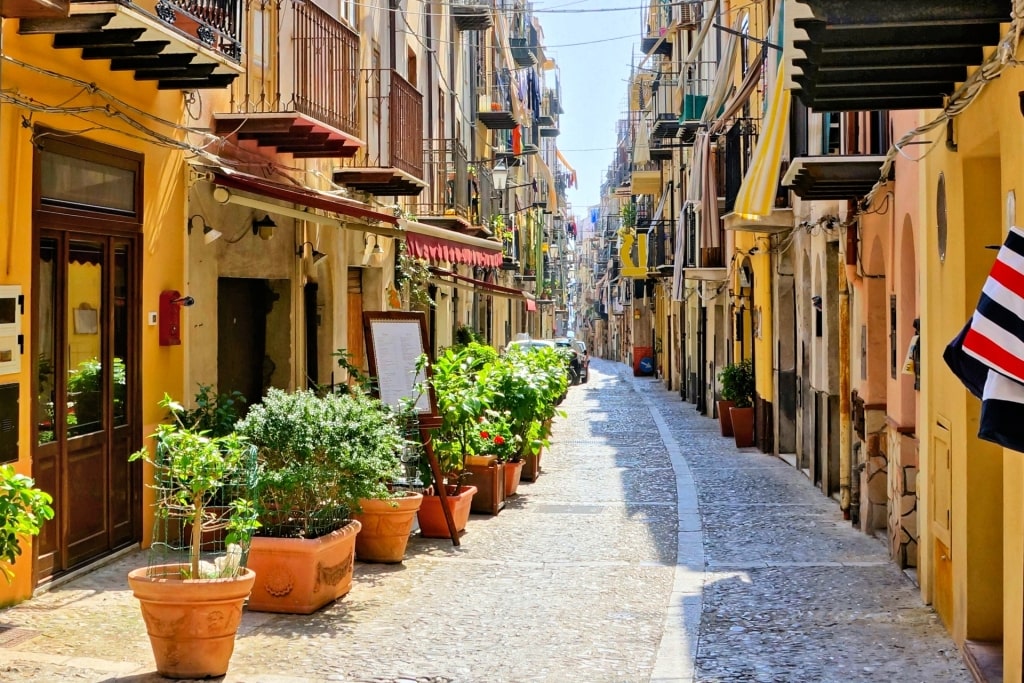
Old Town Cefalù
Once you’ve relaxed on the beach, head into the Old Town streets, dipping into its art and souvenir shops, and finding a cafe for a pick-me-up in the gently sloping main piazza.
While sitting there, you’ll contemplate the immense cathedral, a Norman king’s gesture to the Almighty after not drowning at sea. Discover its incredible UNESCO-listed mosaics within, the artwork glinting in the gloom like the sun off the breakers beyond.
Erice
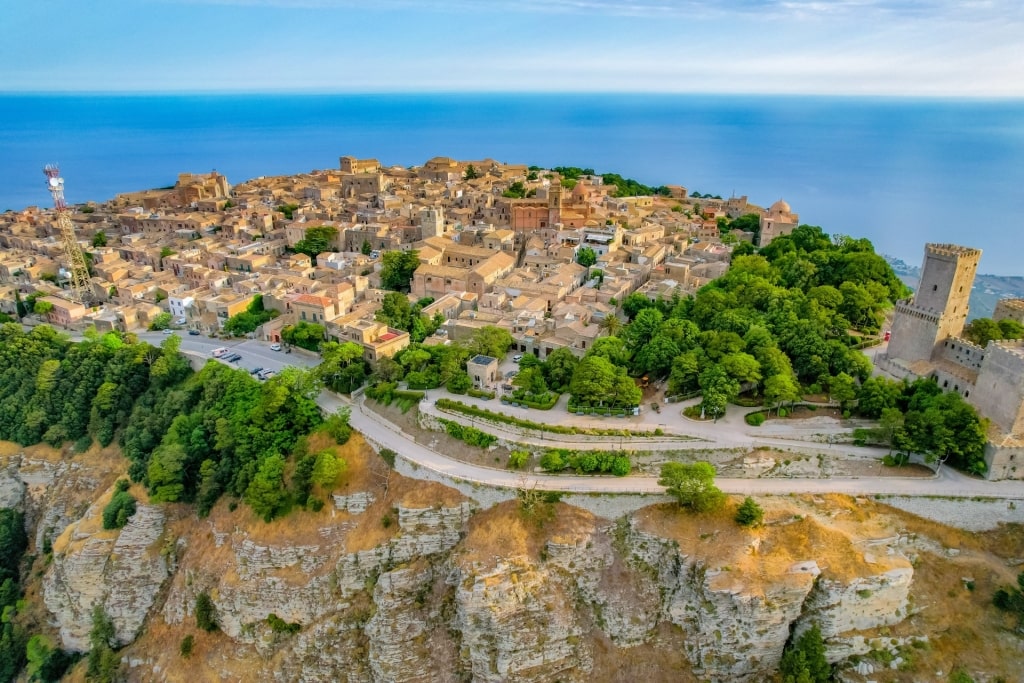
Erice
A hill town set in a commanding position on Mount Saint Julien, visiting Erice is one of the best things to do in Italy. It makes for a superb day trip, reached after an hour and a half’s drive west from Palermo.
Catch the cable car from Trapani’s outskirts to be lifted high above the island’s western coastline. Despite its long attraction to visitors, Erice has retained its authentic charm as well as its millennia-old outer walls.
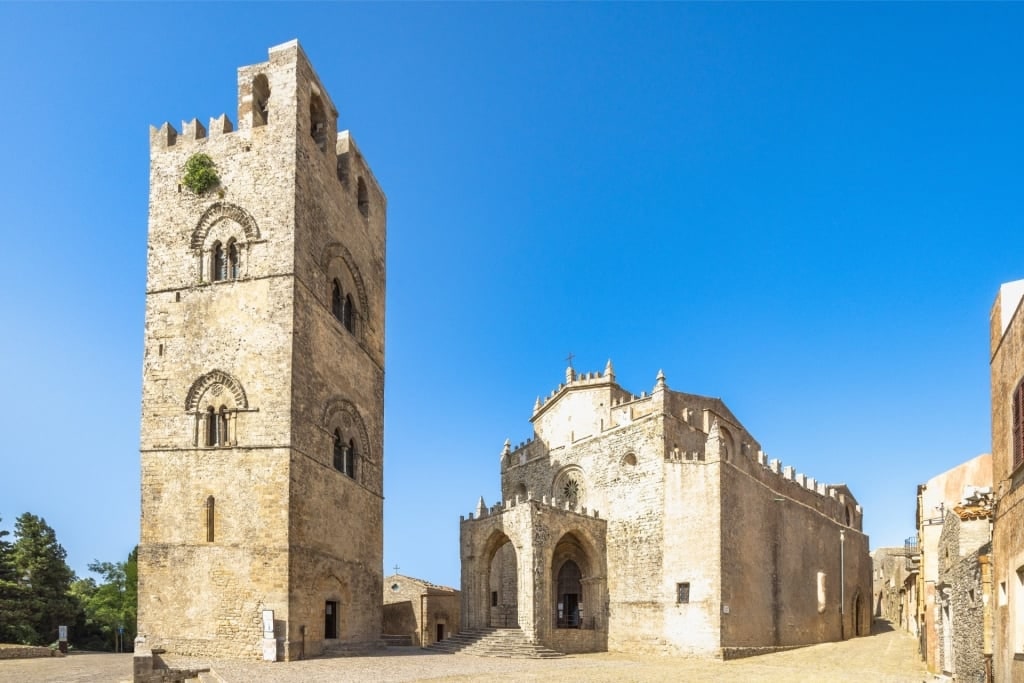
Chiesa Matrice, Erice
Look for its visitor maps suspended on posts and dotted around the city. Not only do they show the plan of Erice, but they also suggest two walking circuits, the longer of which is about two and a half miles. You’ll see many of the town’s main historic sights along the way, such as the ancient Chiesa Matrice.
After admiring the town’s countless viewpoints, congratulate yourself with a seat at a café table squeezed into Erice’s atmospheric lanes of polished cobbles.
Trapani
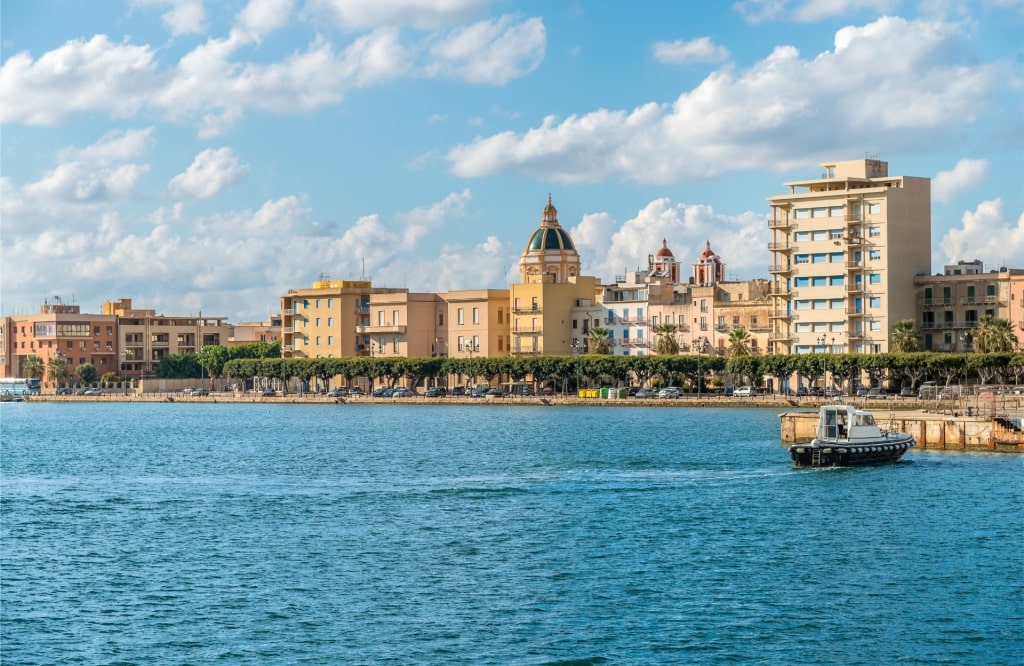
Trapani
The west coast city of Trapani is one of the best places to visit in Sicily. The departure point for the blissful Egadi Islands, the city is also well worth a visit for its sea-view bars, beaches, and naval history.
Its old core is clustered into a curving spit of land that comes with two founding myths. The one that doesn’t involve patricide is that Demeter, the Greek goddess of the harvest, dropped her scythe while searching for her kidnapped daughter, Persephone. The scythe supplied the name, which, over the centuries, became “Trapani.”
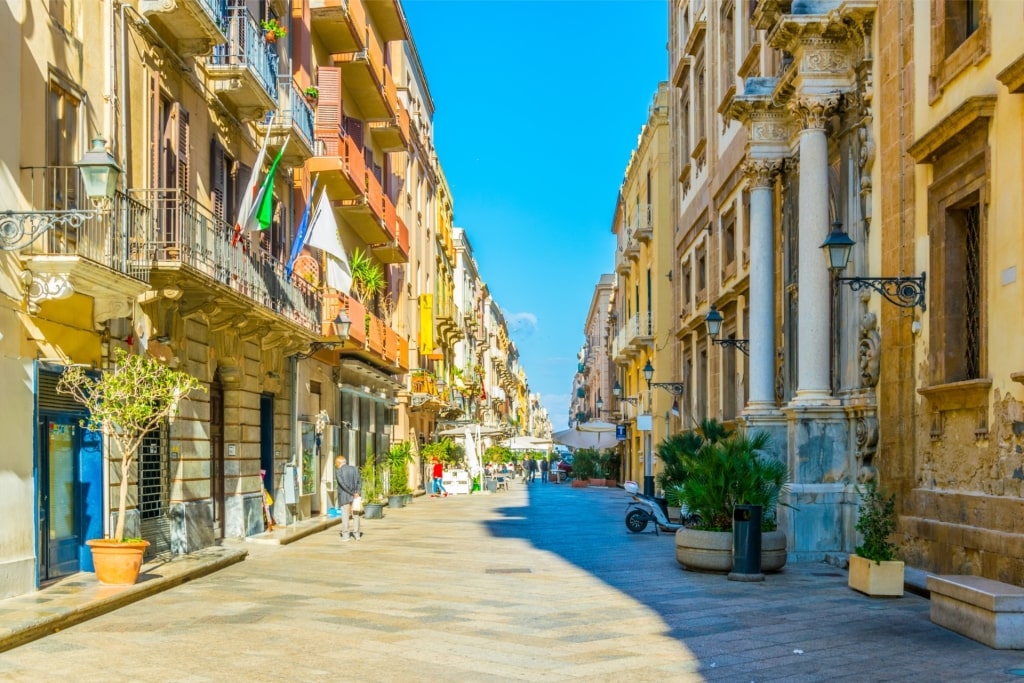
Vittorio Emanuele, Trapani
The city was founded by the Elymians, an indigenous people of Sicily who had their power base in the western part of the island for over a millennium. Once a significant mid-Mediterranean port, medieval Trapani used to be a vital stopping point for ships en route to Tunis, Aragon, and Naples.
Today, Trapani is an easygoing coastal city that’s well worth a visit. Pick up a pot of lemon granita and wander the dimpled marble flagstones of its historic center.
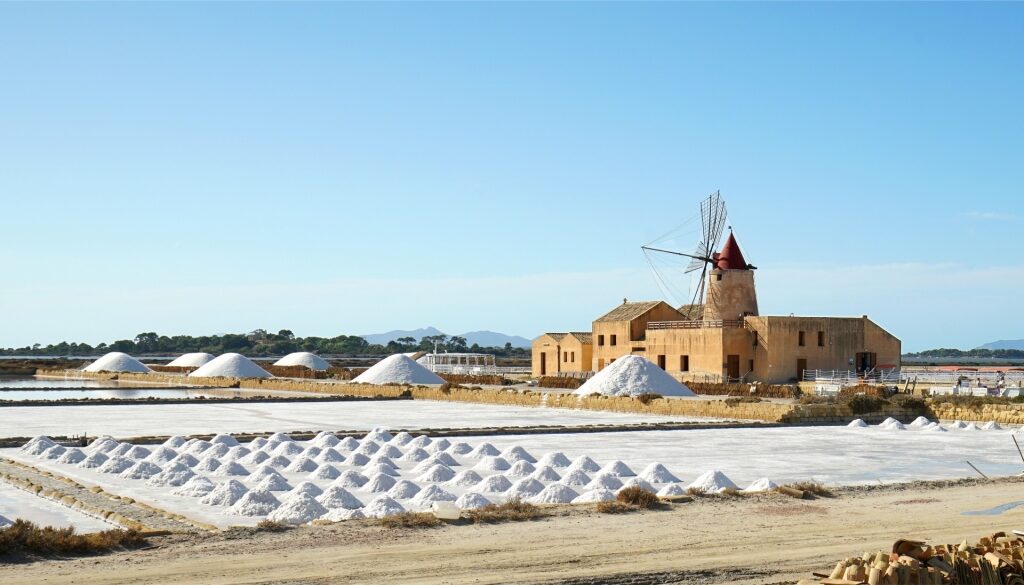
Salt pans, Trapani
Its salt pans make for a good cycling destination, while the aperitivo and passegiata scene on Corso Vittorio Emanuele is one of Italy’s best, especially with the sunset simmering at one end of the west-angled street and the glowing clock face at the other.
For dinner, you’ll find a superb selection of restaurants, although Calvino Pizzeria is a gem, with its potato-laden pizzas and intriguing windowless interior. Be sure to book ahead.
Read: What Is Sicily Known For?
Bagheria
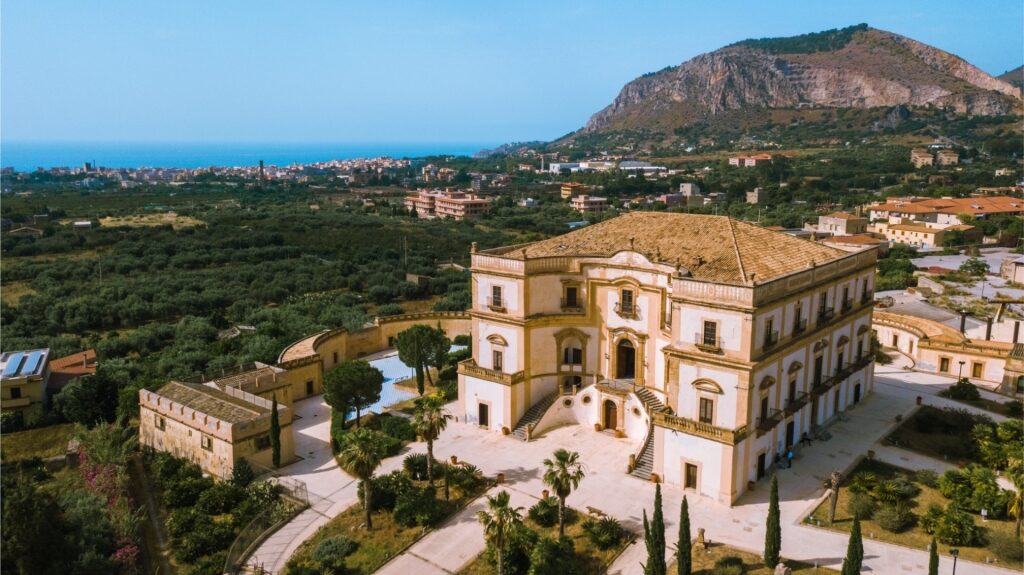
Bagheria
See how Palermo’s other half lived with a visit to Bagheria—a coastal town just east of the capital, where the Sicilian upper crust used to retire for sea breezy summer breaks.
As such, there are some grandiose villas that you can explore in this baroque enclave, best achieved with a guided tour. Villa Palagonia is perhaps the most famous summer residence here, known as the “Villa of Monsters” for its gargoyle-esque statuary
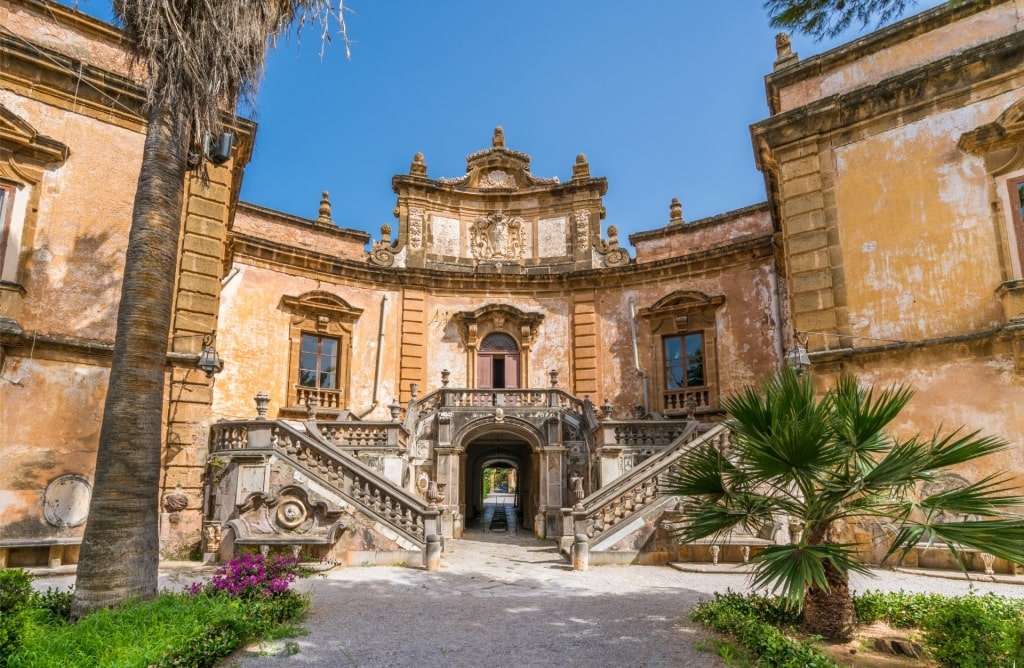
Villa Palagonia, Bagheria
The statuary was shipped in when the property passed from the fifth Prince of Palagonia to his occult-dabbling grandson. With his 200 replicas of fantastic beasts, it became a fixture on the Grand Tours of the 18th and 19th centuries.
A different kind of visionary is connected with the elegant Villa Cattolica, now open to the public as the Museo Renato Guttuso. A Bagheresi by birth, Guttuso, who donated a large selection of his work to the town, is viewed as one of the country’s most influential painters of the last century. His tomb, made of a rare blue marble, is located on the villa’s grounds.
Segesta
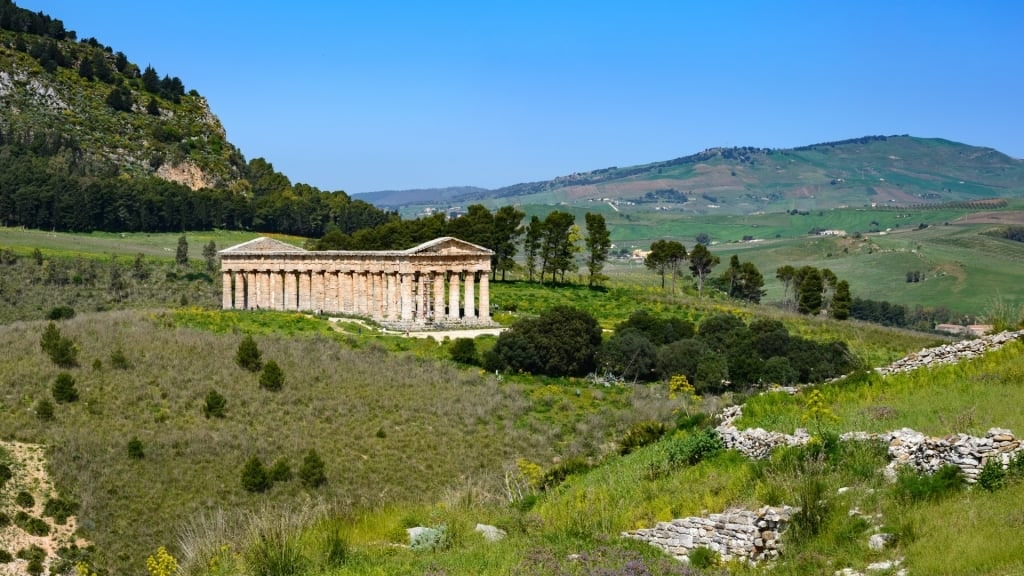
Segesta
Segesta in Sicily is an archaeological park about an hour’s drive from Palermo. Set amid gorgeous rolling countryside, its highlight is a nearly intact Hellenistic temple.
Once a former city of the indigenous Elymians, Segesta was part of their power base in the west of the island. A force on the island from the Bronze Age through to the Middle Ages, the Elymians were eventually conquered by their east coast rival, Syracuse.
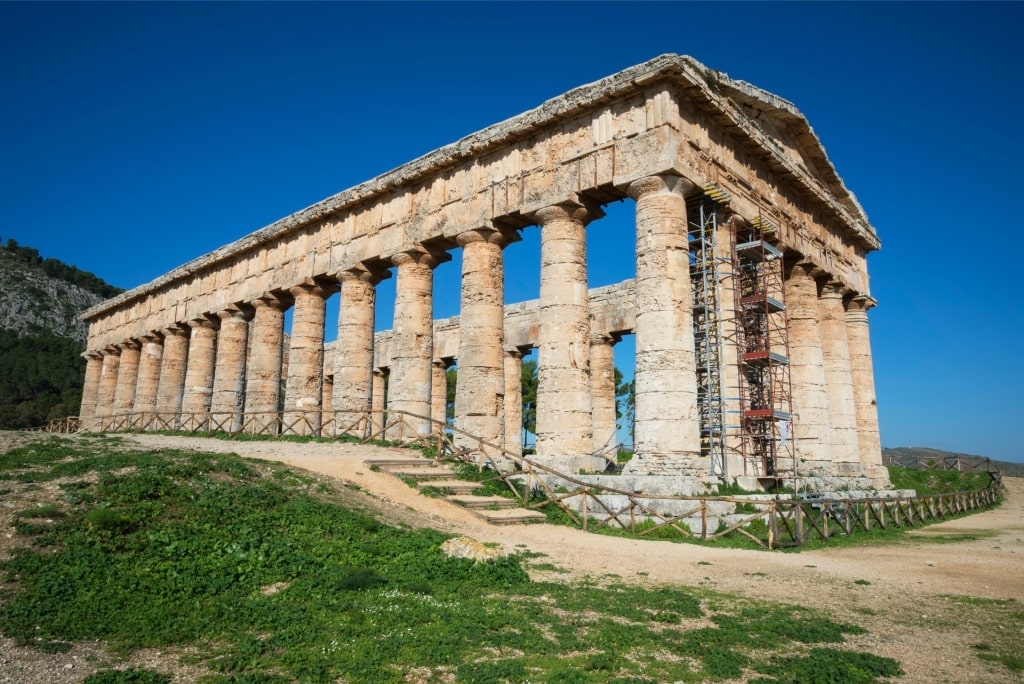
Segesta
The Sicilian towns of Erice and Castellammare del Golfo were both significant to the Elymians, but Segesta was their capital. This extensive site is split into several parts, so allow about two hours for a visit.
There’s a free shuttle that leaves the car park every half an hour to transport visitors to the top section, where you’ll find the remarkable amphitheater with its panoramic views. The main temple, close to the car park, is itself more easily reached. Pick up a self-tour audio guide from the ticket kiosk to breathe life into the evocative Elymian ruins.
Marsala
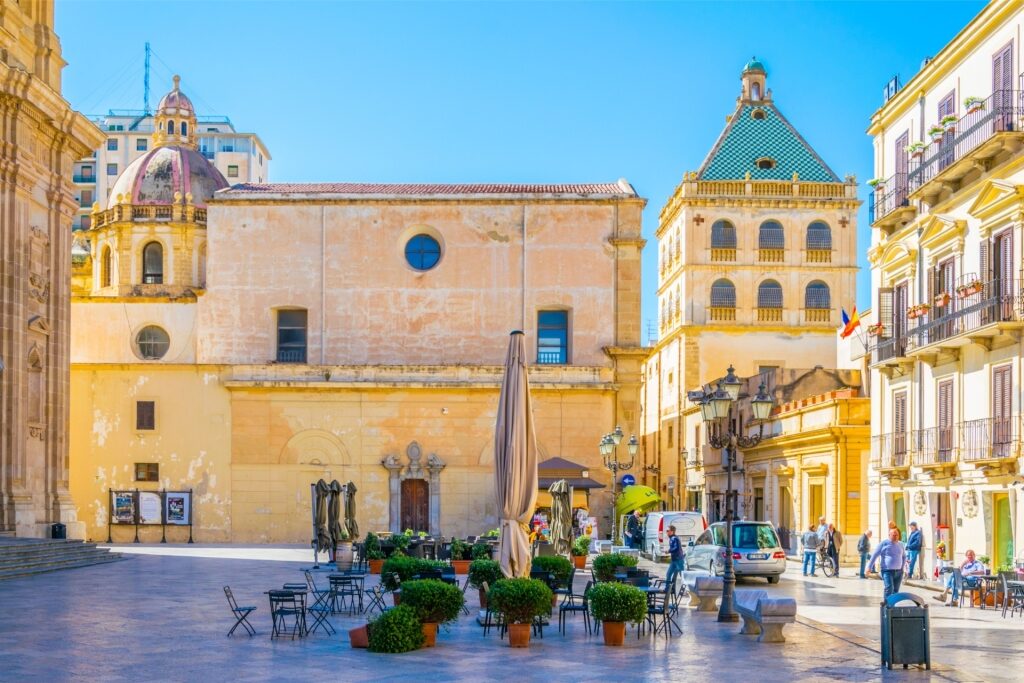
Marsala
The name “Marsala” might ring a bell as it’s a fortified sweet wine that features in numerous recipe books. The town of Marsala, south of Trapani on the western coast, is where this wine has its origins.
Marsala has been exporting its sweet wine since the 18th century, and continues to be the west coast’s epicenter for wine production. The town is also significant for another reason, as it’s where Garibaldi landed ahead of Sicily joining the new Kingdom of Italy in 1861.
Marsala’s handsomely restored old town is a lovely place to explore. Shaded alleyways open up before baroque edifices such as the impressive Duomo. It’s also worth finding your way to the Archaeological Museum on the waterfront, for its remarkable naval exhibits that include a reconstructed Punic-era warship.
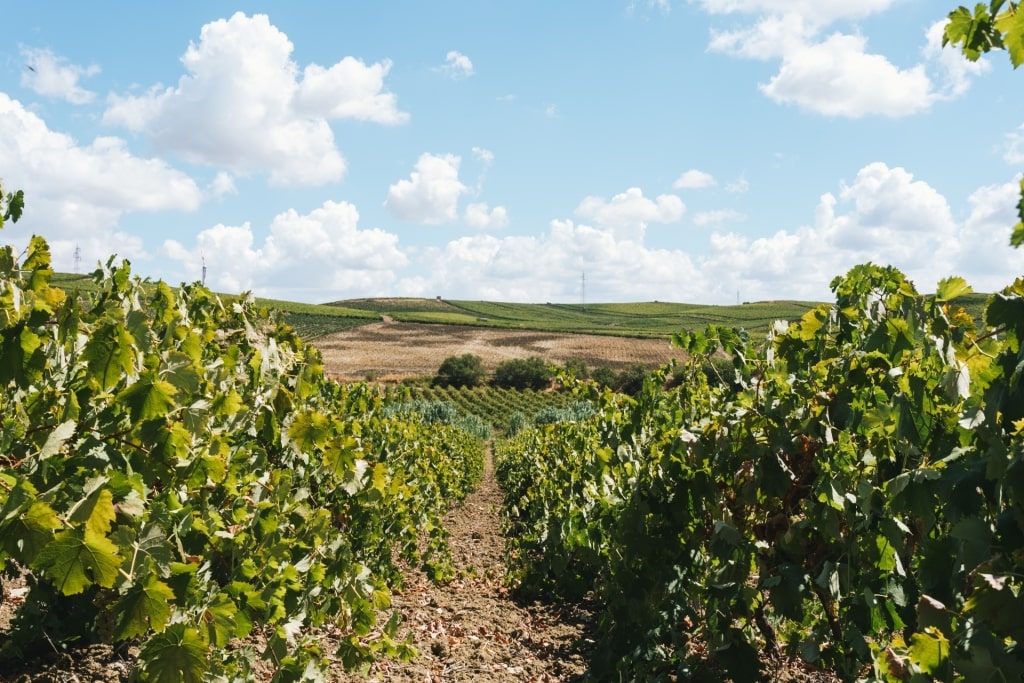
Vineyard in Marsala
To return to more important matters, there are several wine bars and tasting rooms dotted throughout the historic center. Slightly further out, you’ll find some of the more significant wineries such as Cantine Florio or Cantine Pellegrino Marsala, the latter located close to the birding paradise of Parco Salinella. Be sure to call in advance to book a tasting.
Castellammare del Golfo
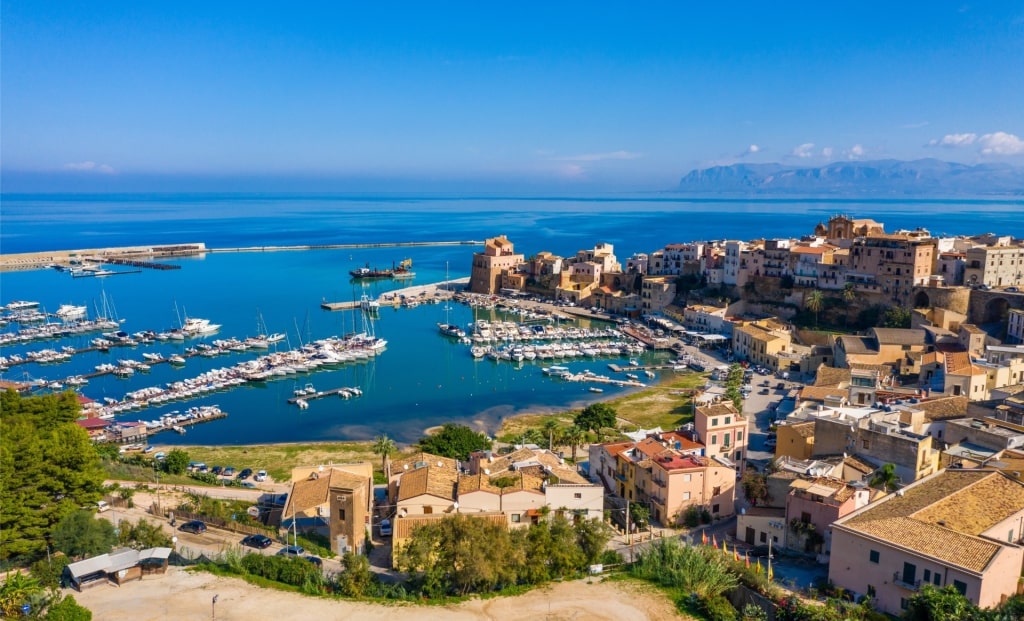
Castellammare del Golfo
A lovely seaside town with two beaches on either side of a protruding spit of land, Castellammare del Golfo is a popular place to visit in the summer.
Its high street, lined with orange trees, has a satisfactory density of cannoli and gelato purveyors, and an excellent deli hung with hams serving up beautiful sandwiches full of local specialities. Or find your way to Cala Marina and the seafood restaurants that line the harbor, watching the big game fishing boats puttering out to sea from your table.
Castellammare del Golfo has a long history, as the town’s 9th-century Arab-Norman Castle will attest; it’s now home to a museum focused on the local tuna industry. However, Castellammare del Golfo’s importance stretches back even further, to the era of the ancient Elymians, for whom it was their primary port.
Scopello
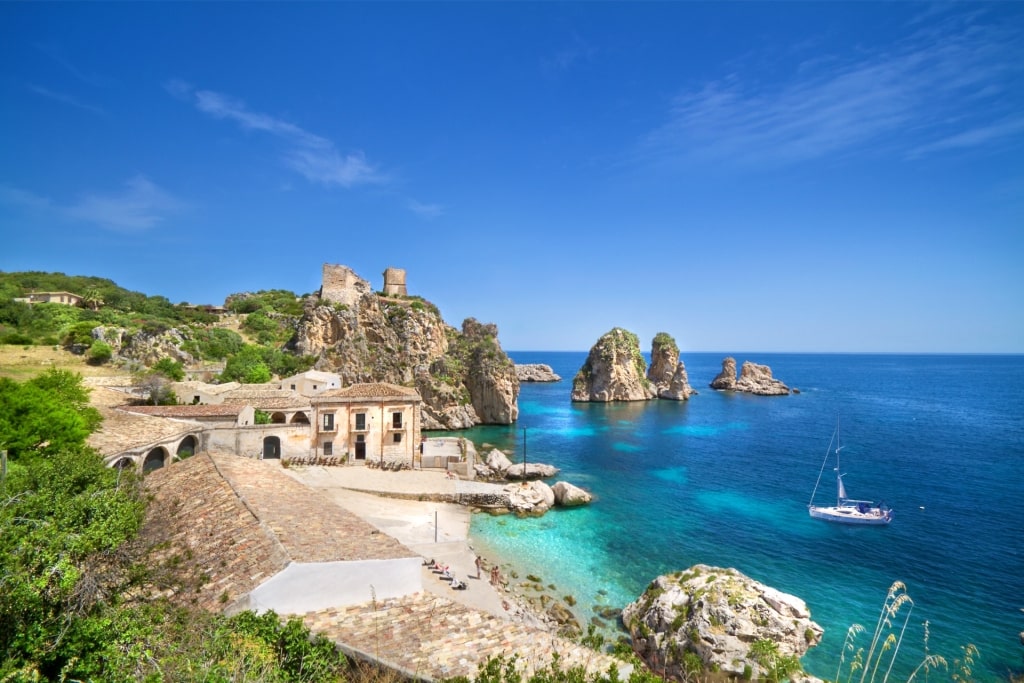
Scopello
One of the best places to visit in Sicily for a slice of paradise by the sea, Scopello is a seaside village found a short drive north of Castellemmare del Golfo.
It’s reached via a winding highway that skirts the coast, offering views of the coastal mountains of Zingalo National Park and western Sicily’s undulating green interior. Scopello is a village that grew up around an old country house—“baglio”—as well as a tonnara, or complex once used for processing tuna fish.
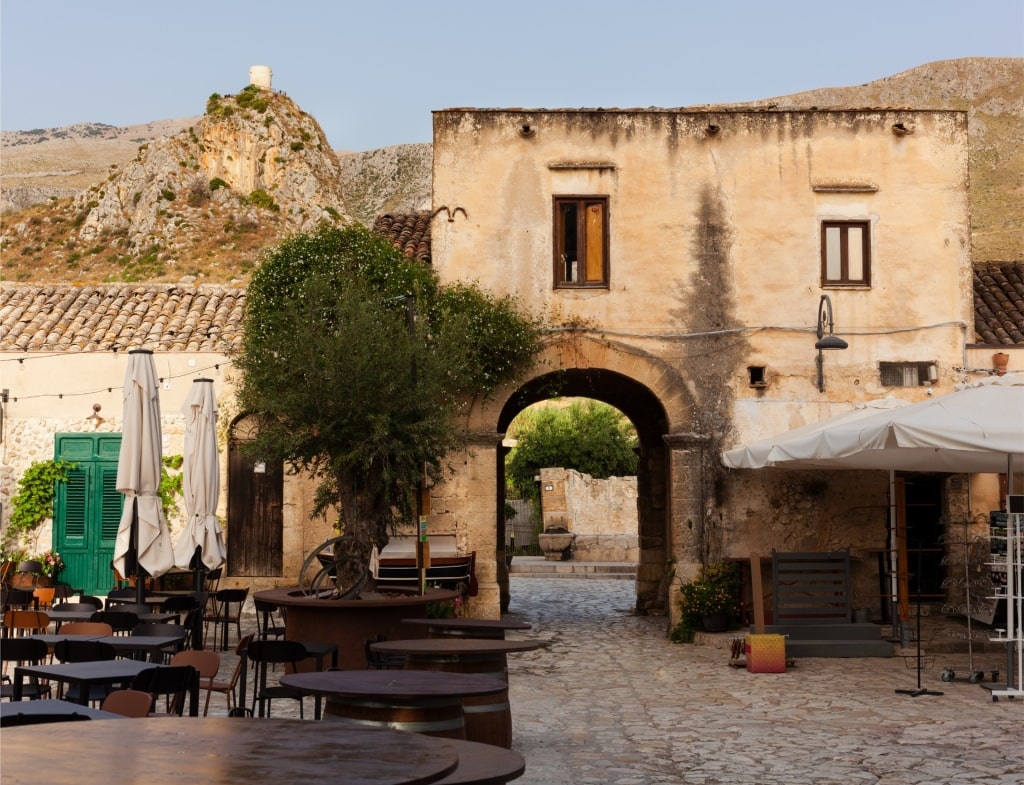
Scopello
The tonnara is no longer in use; it’s now converted into enviable apartments for rent, and it’s possible to take a dip in the inviting crystalline water without fear of becoming bycatch. Offshore, handsome sea stacks rise from the emerald depths. After your dip, return to the village and dither over which of the numerous restaurants to eat at.
FAQs
What is the most beautiful part of Sicily?

Val di Noto
This depends entirely on what you’re looking for. For many, a hidden gem is the Val di Noto, where a cluster of gorgeous baroque towns gather around a landscape riven with gorges and ravines.
Ortigia, the historic white limestone core of Syracuse, is another stunning facet of Sicily. Or there’s the perfectly positioned resort of Taormina, set in the hillside overlooking Isola Bella.
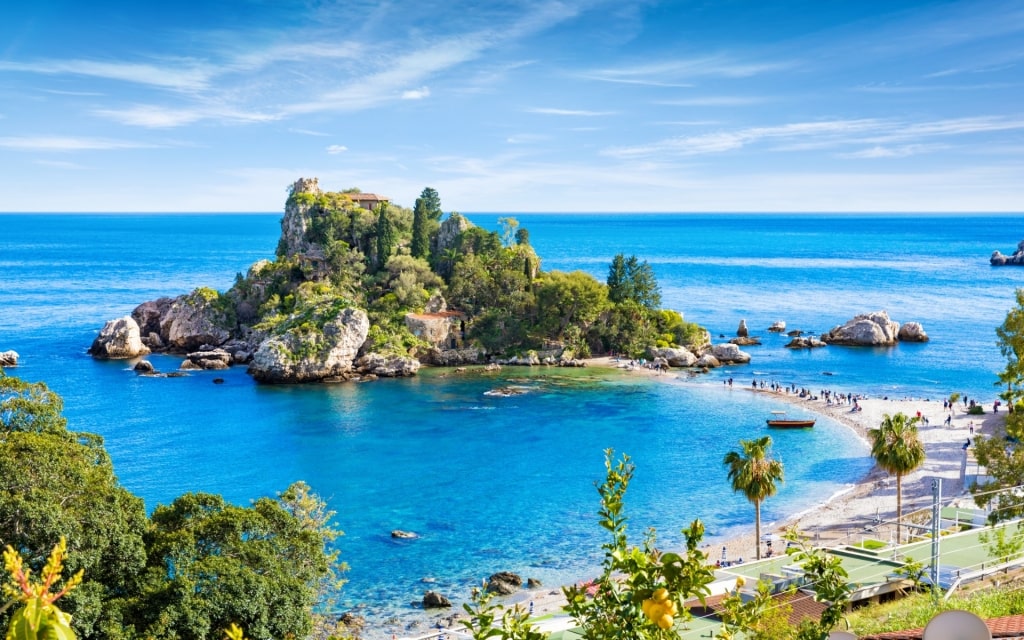
Isola Bella
If you’re after more beautiful beaches, you can find endlessly photogenic sandy strips on the southern coast or gorgeous ribbons in the north, such as at Cefalù and Tindari, with the rugged hinterland rising dramatically.
Then there’s the vine-striped slopes and forests of Mount Etna, or the glorious setting of ancient temples such as Segesta. Sicily is like a well-cut gem—beautiful from all sides.
What are the best places to visit in Sicily for first-time travelers?

Greek theatre of Taormina
The east coast of Sicily is the perfect introduction to the island. With Syracuse, Taormina, Catania, and easy access to Mount Etna, a Sicily newbie can quickly experience the history, glamor, cuisine, and landscape that make this island so unique.
What are the best places to visit in Sicily for food lovers?

Spleen sandwich
The capital of Palermo offers the greatest breadth of gastronomic interest for the traveling foodie. From beef spleen sandwiches to deep-dish sfincione pizza squares, the city’s street food offers much to discover.
Palermo is also famous for its outdoor food markets that showcase the city’s flavorful produce and multicultural tapestry.
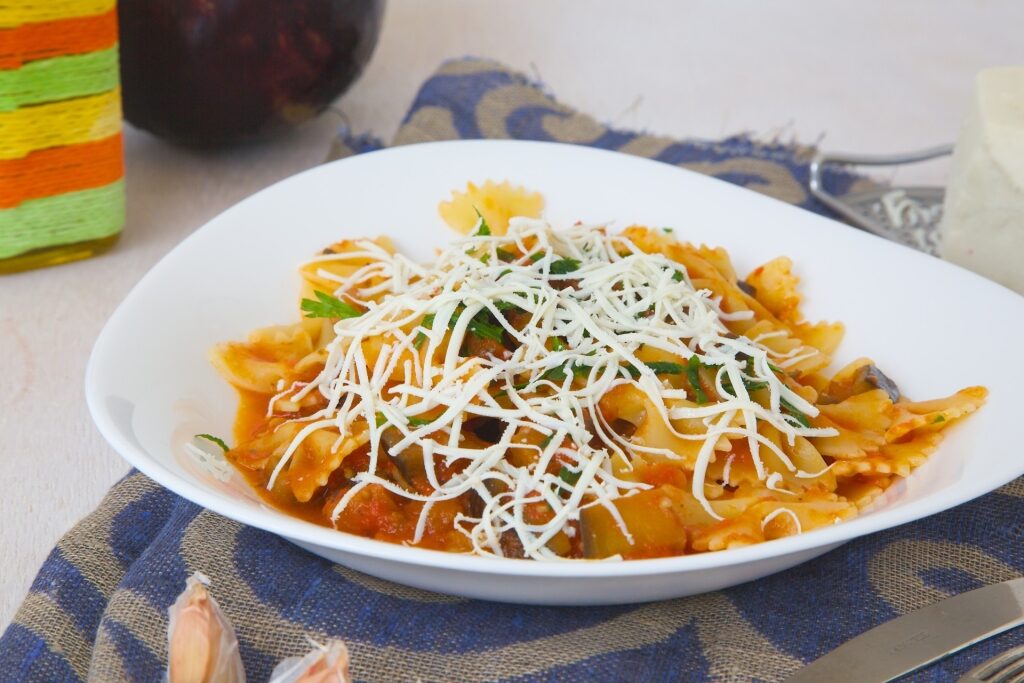
Pasta alla norma
On the east coast, the city of Catania is another gastronomic hub. The home of Pasta alla Norma, Catania is a wonderful place for lovers of seafood dishes and classic Italian staples such as crispy balls of arancini and creamy tubes of cannoli.
What are the best places to visit in Sicily for families?
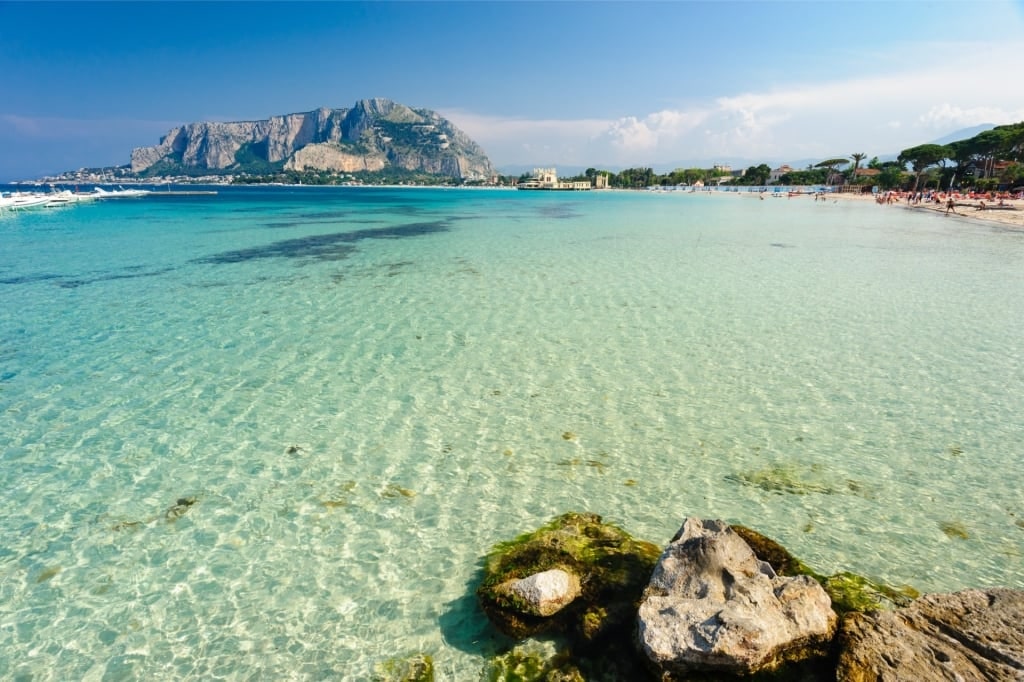
Mondello Beach, Palermo
It’s hard to beat a day at Palermo’s Mondello Beach, or the resort of Cefalù. The former is situated within easy striking distance from anywhere in the capital, with plenty of restaurants close at hand, such as the upscale Ristorante alle Terrazze on the pier.
Salt production has been one of the key drivers of Trapani’s economy for centuries. Cycling out to the salt pans on bikes is a favorite family activity. Afterwards, with calories burnt, you can pop into one of Trapani’s pizzerias and justify a delicious roast potato-studded pie.
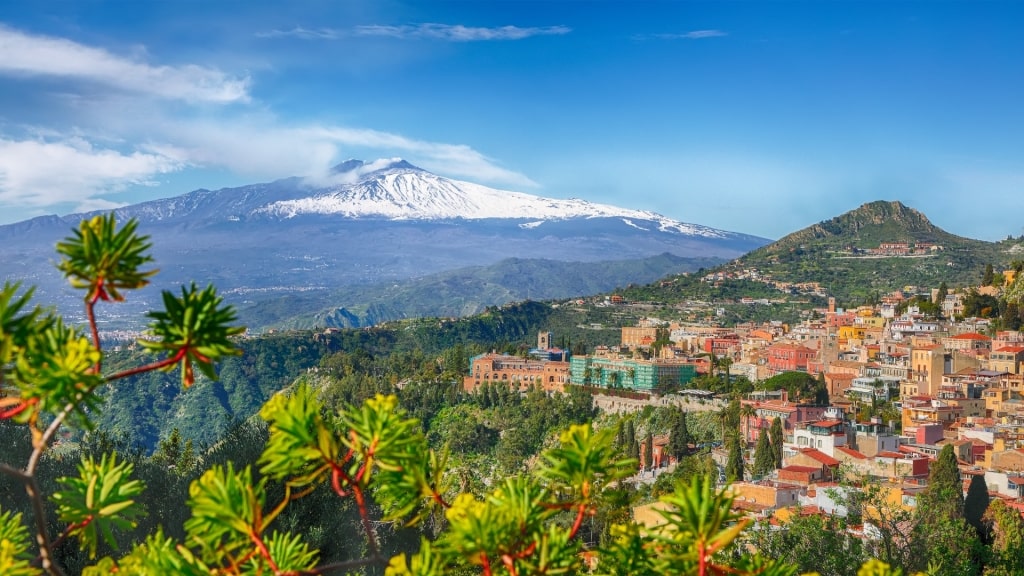
Mount Etna
Discover the beauty of this magical island for yourself. Browse Celebrity’s cruises to Sicily and plan your Italian adventure.
